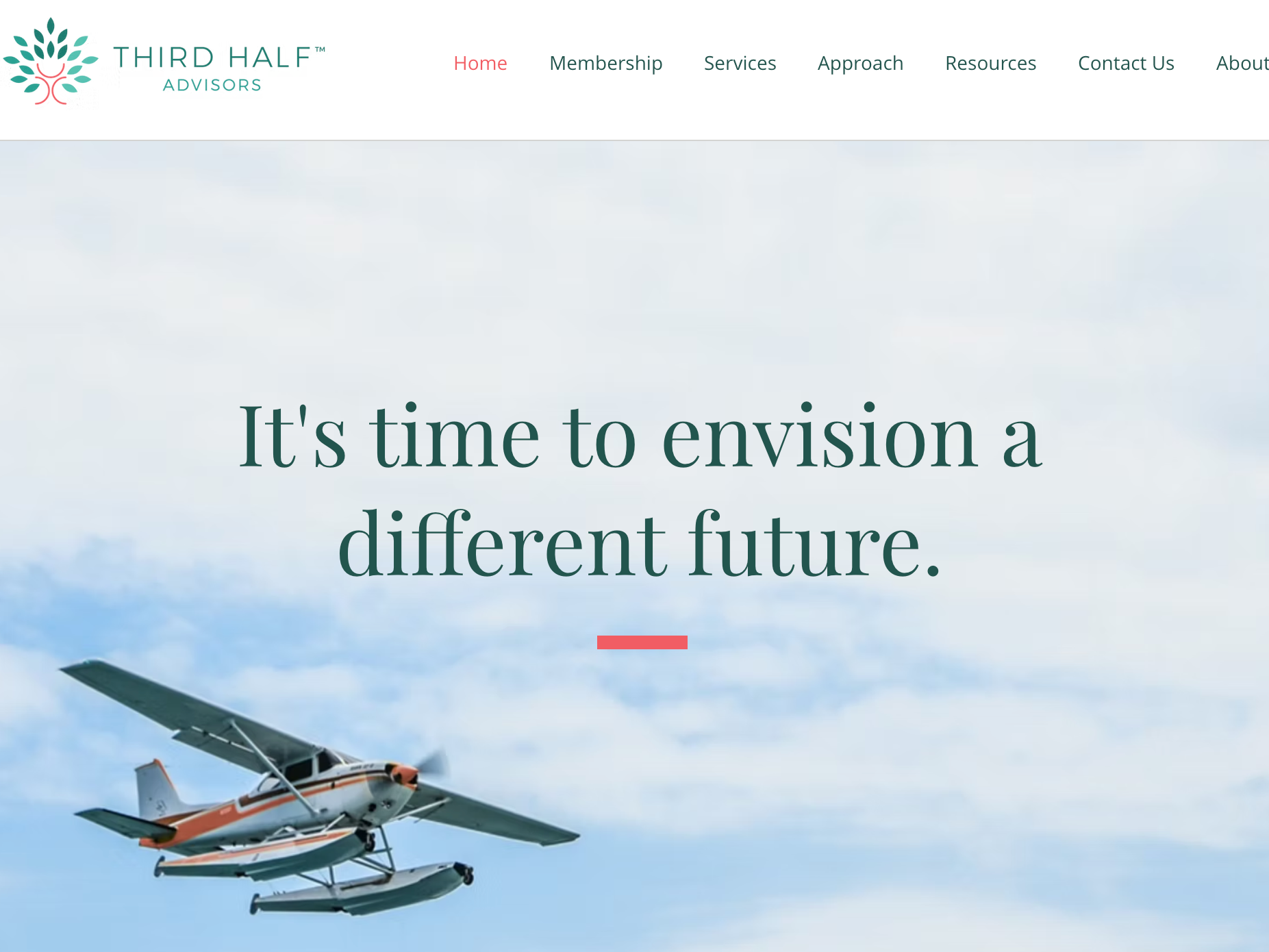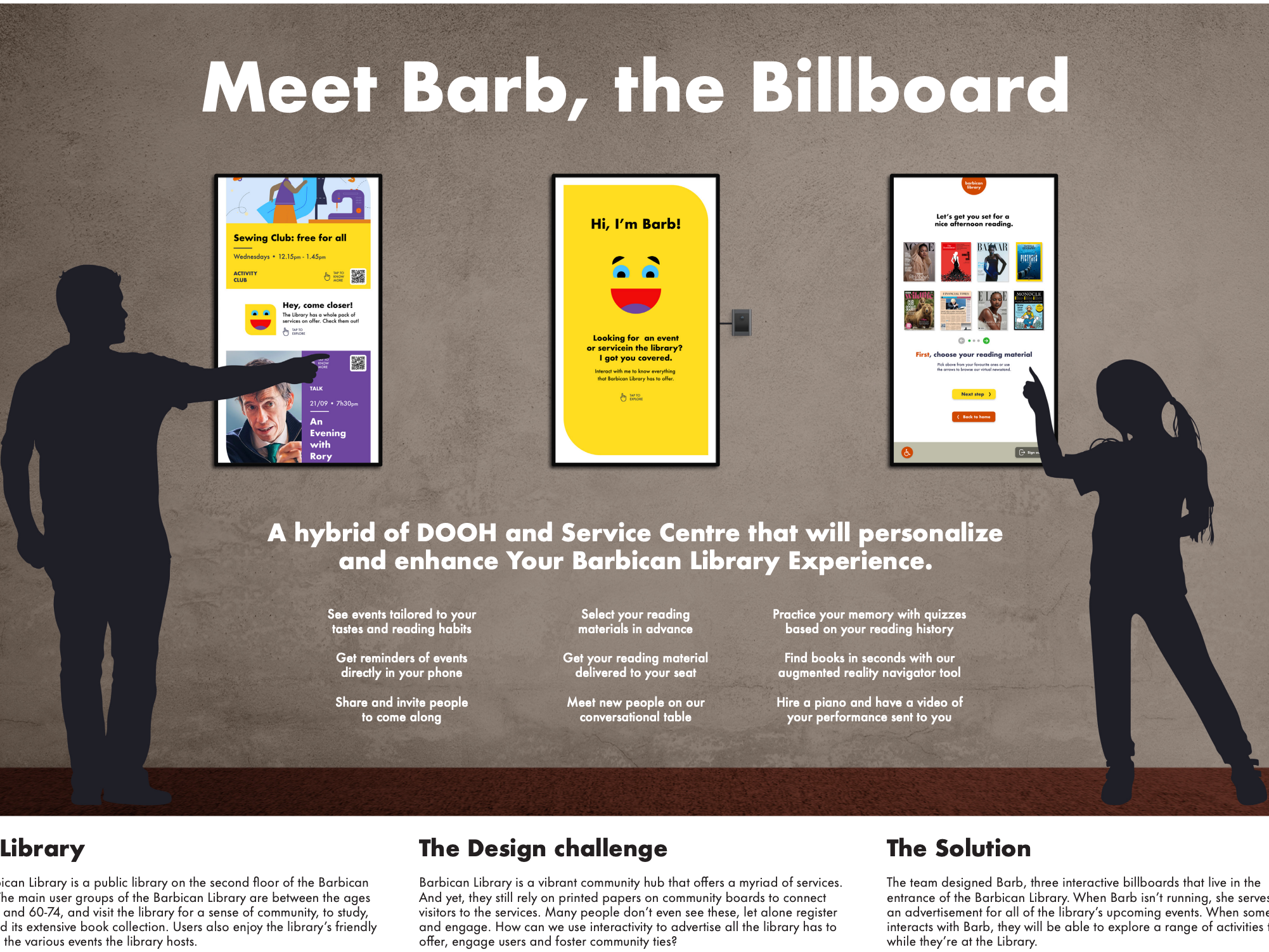Overview
Carbon reporting is coming fast. Companies don't have an easy way to source secondary data from upstream and downstream activities in their supply chain, which impacts the quality of their data. This leads to inaccurate data reporting.
At Carbon Instincts, we saw an opportunity to use AI and machine learning to create a platform that analyzes vast amounts of data from various sources to accurately measure and model carbon emissions across an organization’s operations and product portfolios.
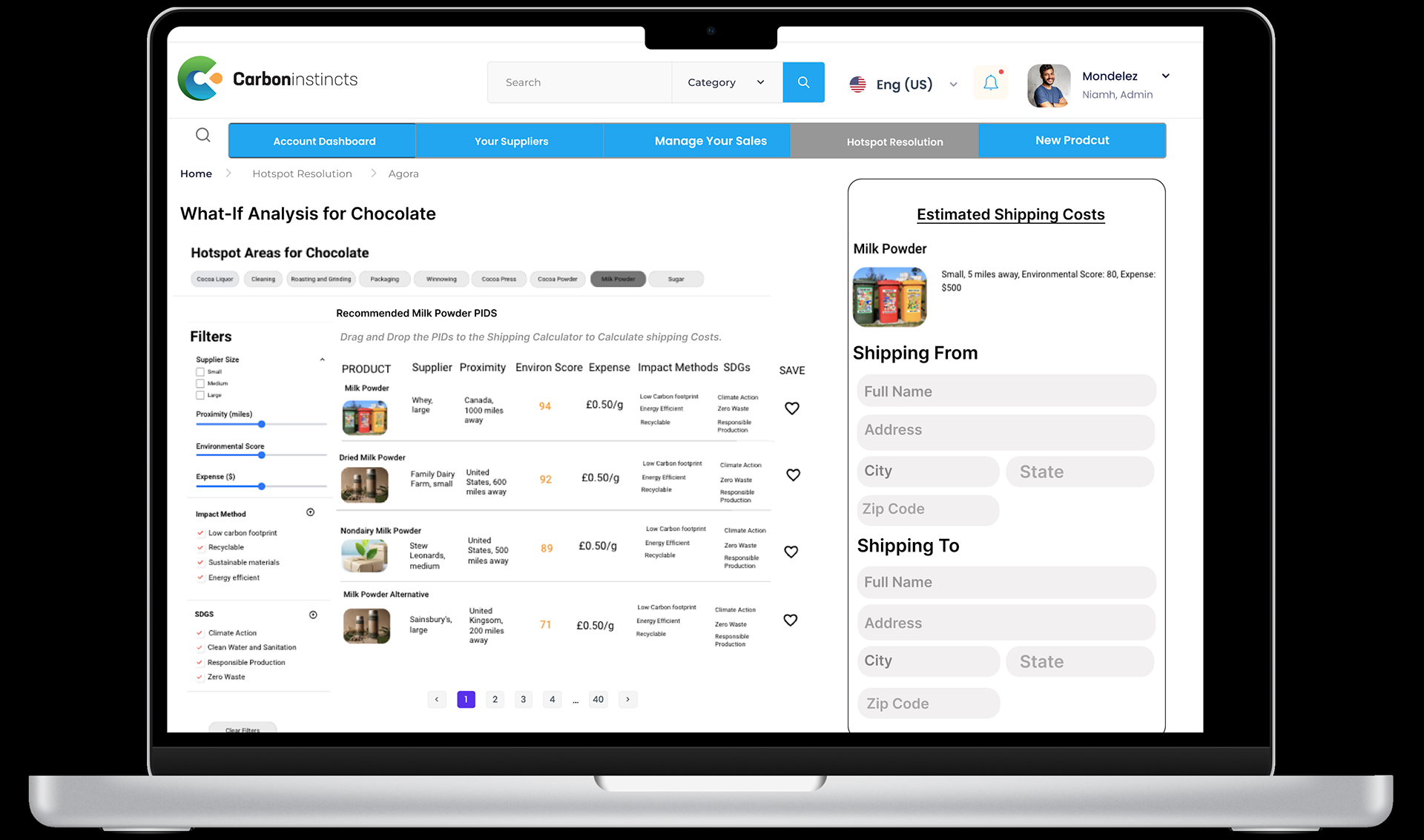

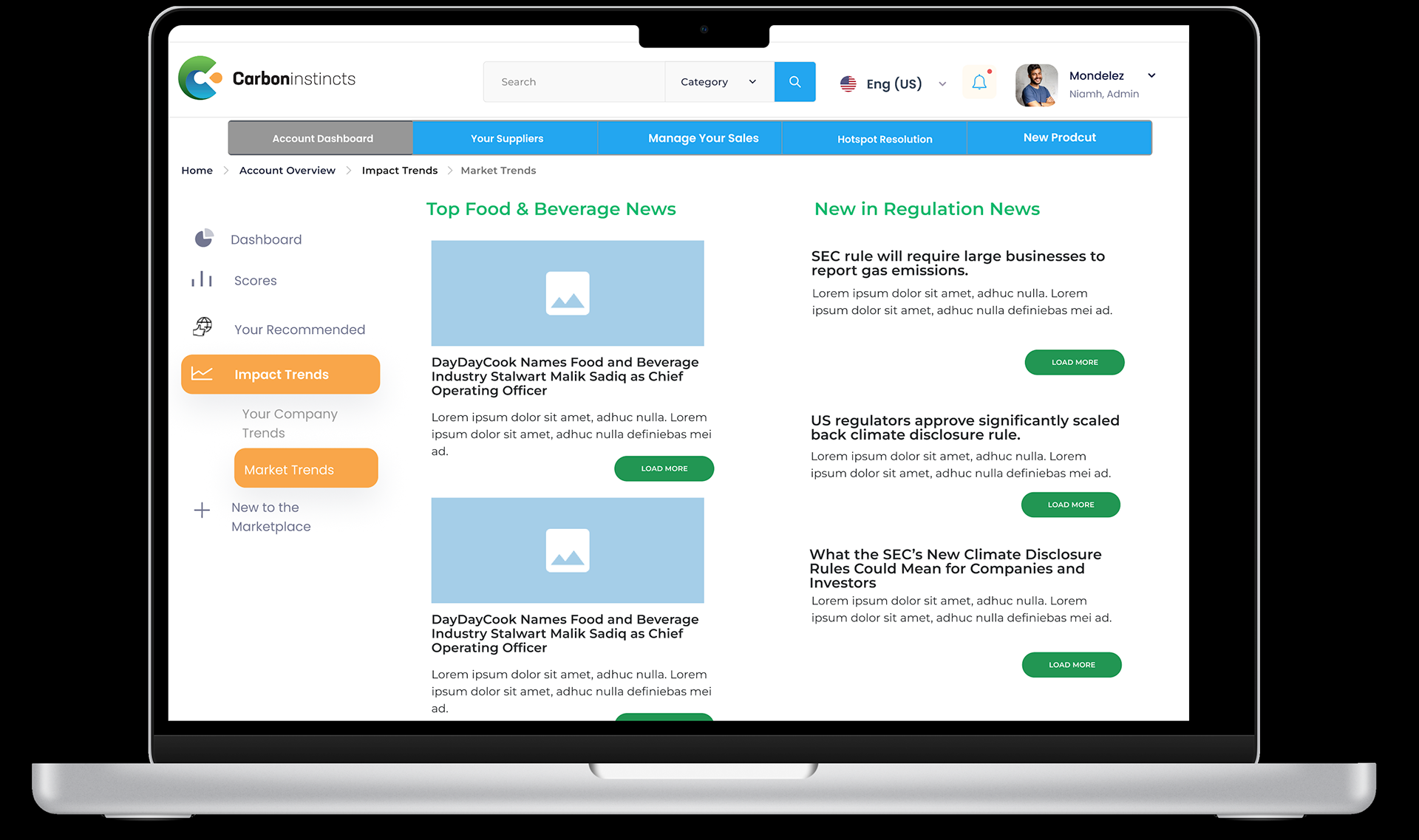
Role
Product Designer
Timeline
January 2024 – January 2025
Team
Janie Hendrickson, Product Designer
Tony Scotte, Co-founder
Dr. Thor Roser, Co-founder
Ricardo Zaragoza, LCA Specialist
Jon Scott, Engineer
Skills
Competitive Analysis
User-Journey-Mapping
Personas
Low-Fidelity-Wireframing
High-Fidelity-Wireframing
User Evaluations
Tools
Figma
Excalidraw
Dscout
Usertesting
The Problem
Large enterprises that do business in the EU, including those based outside of the EU, will need to disclose their emissions starting in 2025.
Companies typically develop a Life Cycle Assessment (LCA) to analyze their emissions, but sourcing secondary data (i.e., scope 3 emissions) is challenging because it's costly to develop an LCA, and there's no simple way to measure "moment-in-time data."
Scope 3 emissions account for more than 70% of a business’s carbon footprint, leading to the majority of businesses falsely reporting their carbon emissions.
The Solution
The solution we proposed is a platform that uses AI to give businesses the information and tools they need to more accurately track their carbon emissions and become more environmentally friendly and competitive in a sustainability-focused market.
The core functionalities we initially prioritized were:
1. A dashboard for collecting and analyzing data to calculate carbon emissions across a company's operations and products.
2. A sankey diagram and hotspot analysis tool that provides quick and reliable environmental impact assessments for products and services.
3. An AI integration to suggest products that emit less carbon to create a more sustainable supply chain and product development.
Key Insights
1. Users own multiple products: Surveys revealed that the majority of users own multiple products with overlapping LCAs (for instance, milk chocolate has the same LCA as dark chocolate, just with a few added steps).
2. Pain Point—"Moment-in-time-data": Feedback from competing platforms indicated that users struggle to know where in the LCA to include certain processes (such as cleaning cocoa beans) that only run for a select period of time and not continuously throughout the production lifecycle.
3. Widespread Validation: Interviews with sustainability experts validated that sourcing accurate secondary data is near impossible, significantly impacting their ability to report carbon emissions.
Research Overview
Our research approach was guided by competitive analyses, expert interviews (LCA experts and sustainability experts), and design thinking workshops.
1. Competitive Analysis: I conducted a competitive analysis on 10 competing platforms to explore the problem space.
2. Expert Interviews: Expert interviews were conducted with internal stakeholders and sustainability experts to gain additional context and validate why identified problems exist.
3. Design thinking workshops: Multiple workshops were conducted utilizing research insights. Methods such as personas helped shape user flow diagrams. During product design, low-fidelity prototypes were used to gather group feedback on wireframes and high-fidelity screens.
Solution Overview
The platform was designed to address the identified pain points with the following key features:
1. Analytics Dashboard: A tool to analyze companies' carbon trends and how they compare to others in the industry.
2. Hotspot Analysis: A tool to easily highlight where the most carbon is emitted throughout the lifecycle production process.
3. Sankey Diagram: A tool to visualize how one product's emissions impact the upstream and downstream value chain.
Low-Fidelity Wireframes and Exploratory Designs
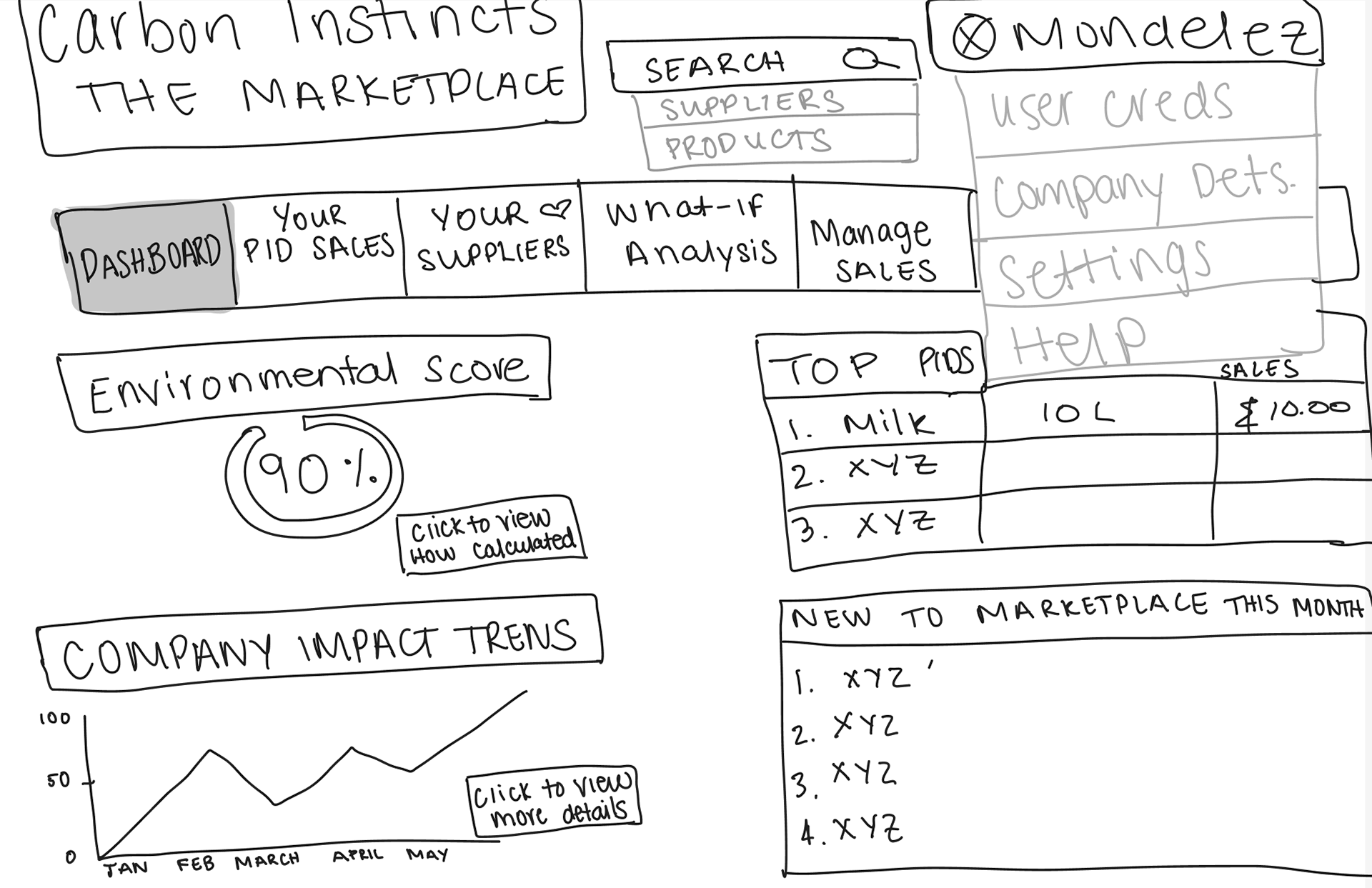
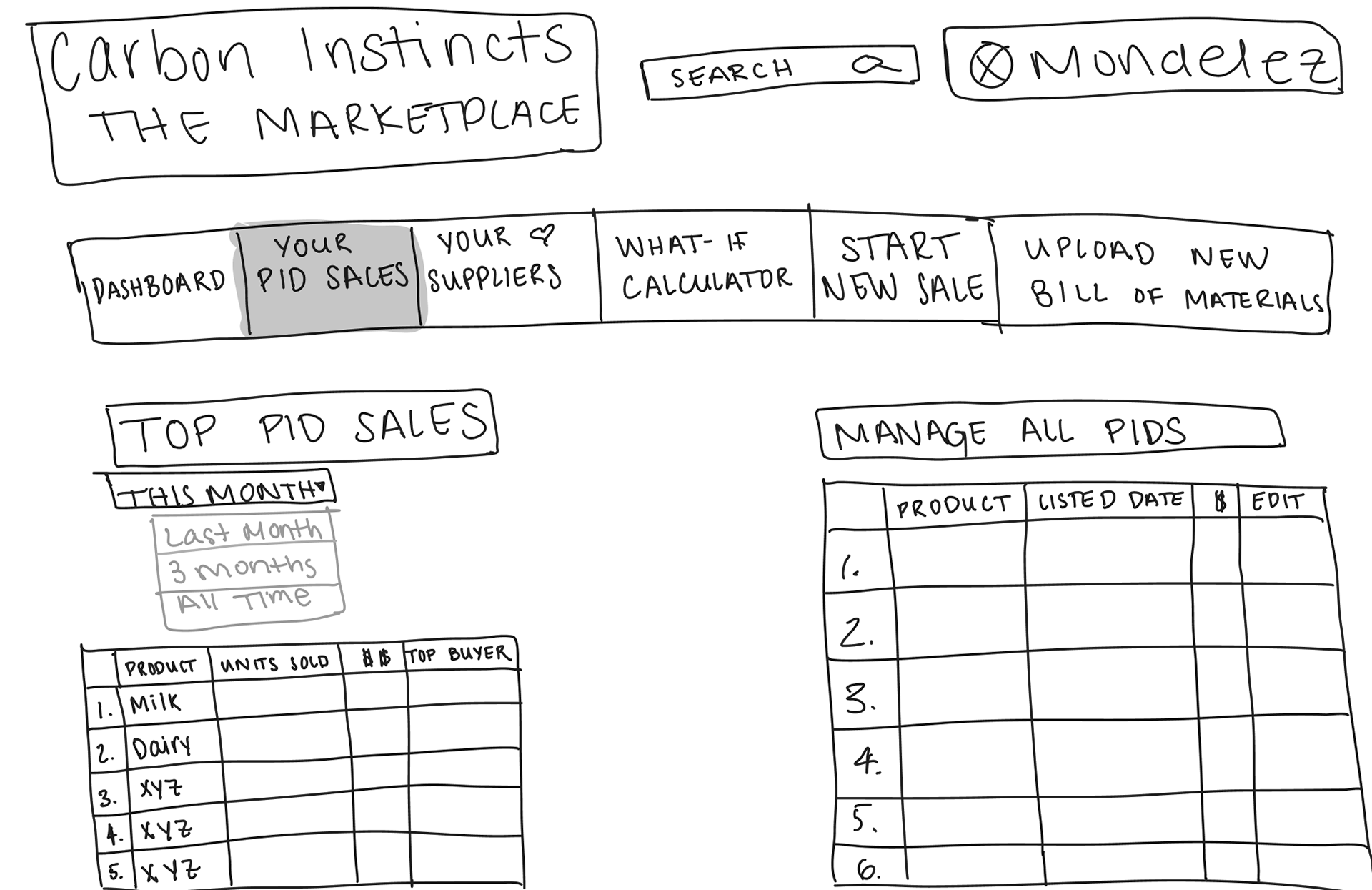
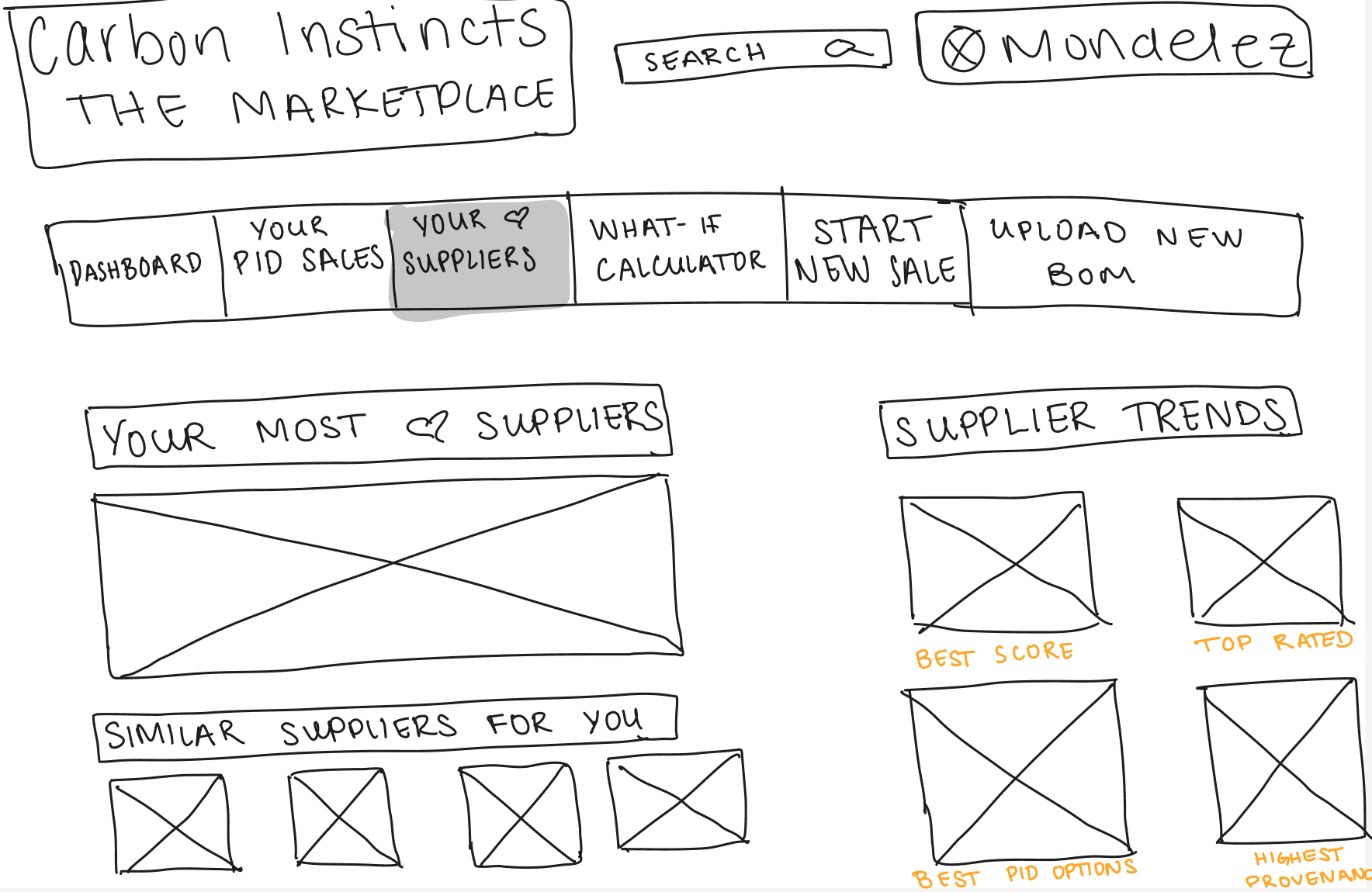
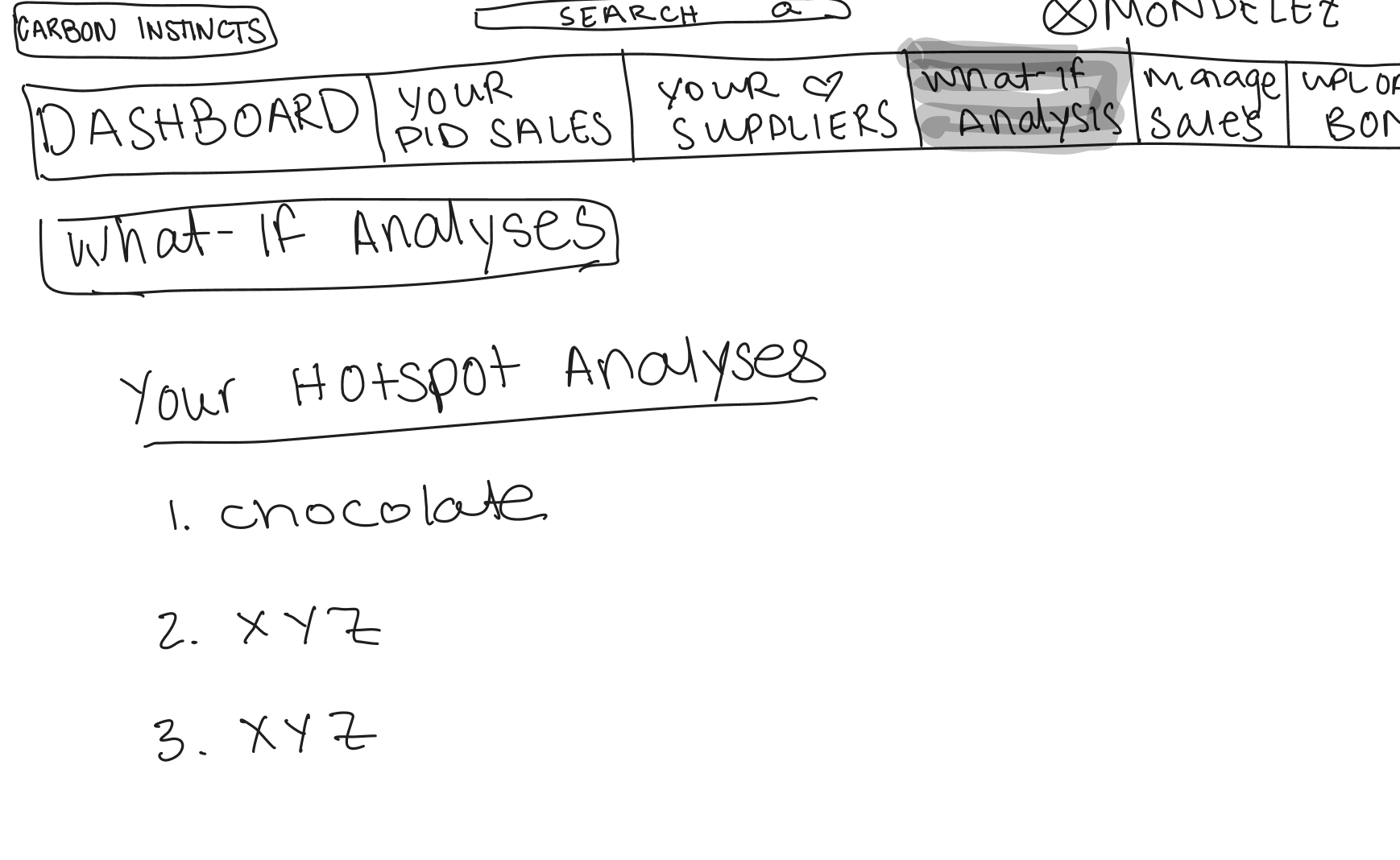

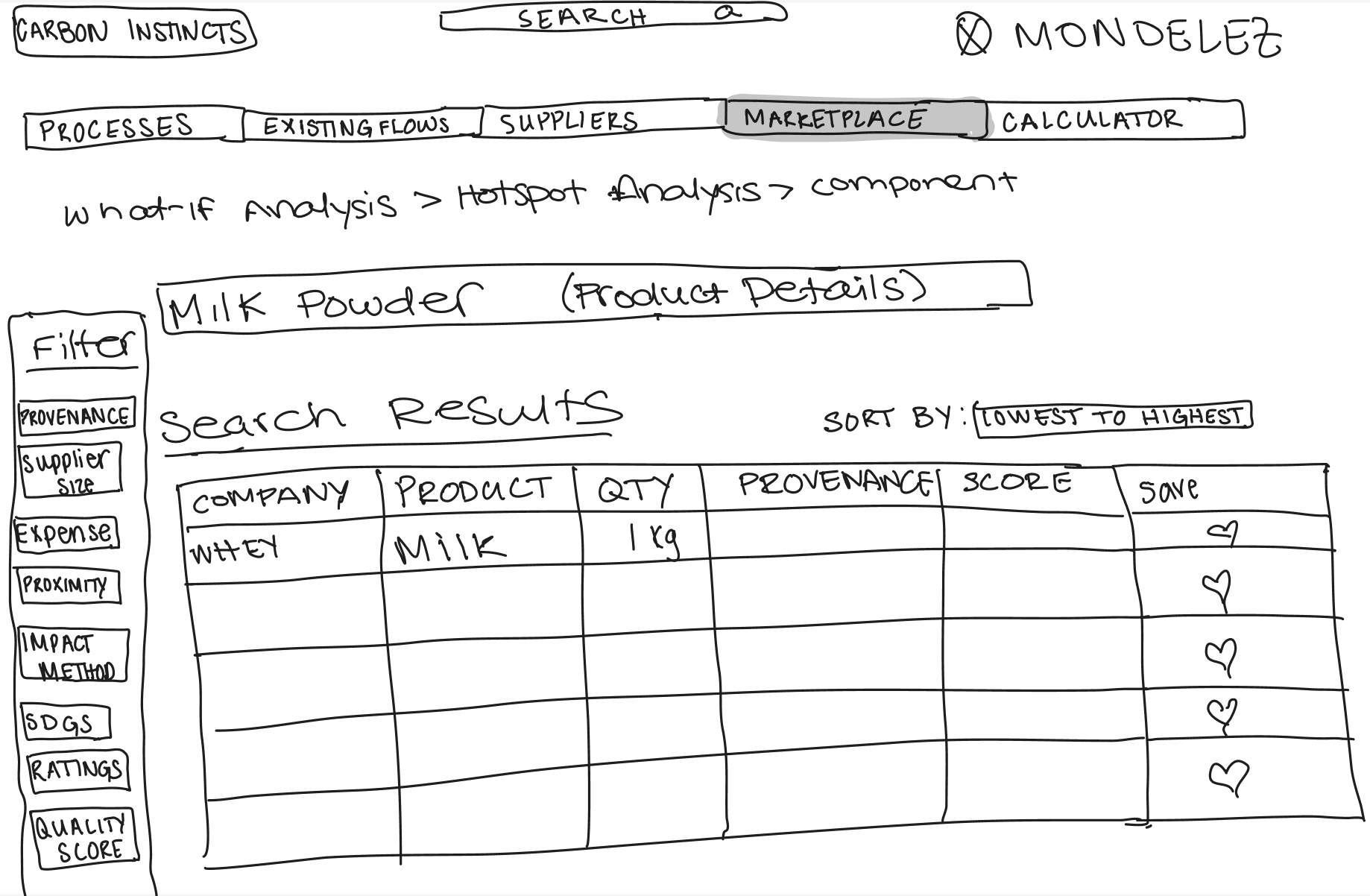
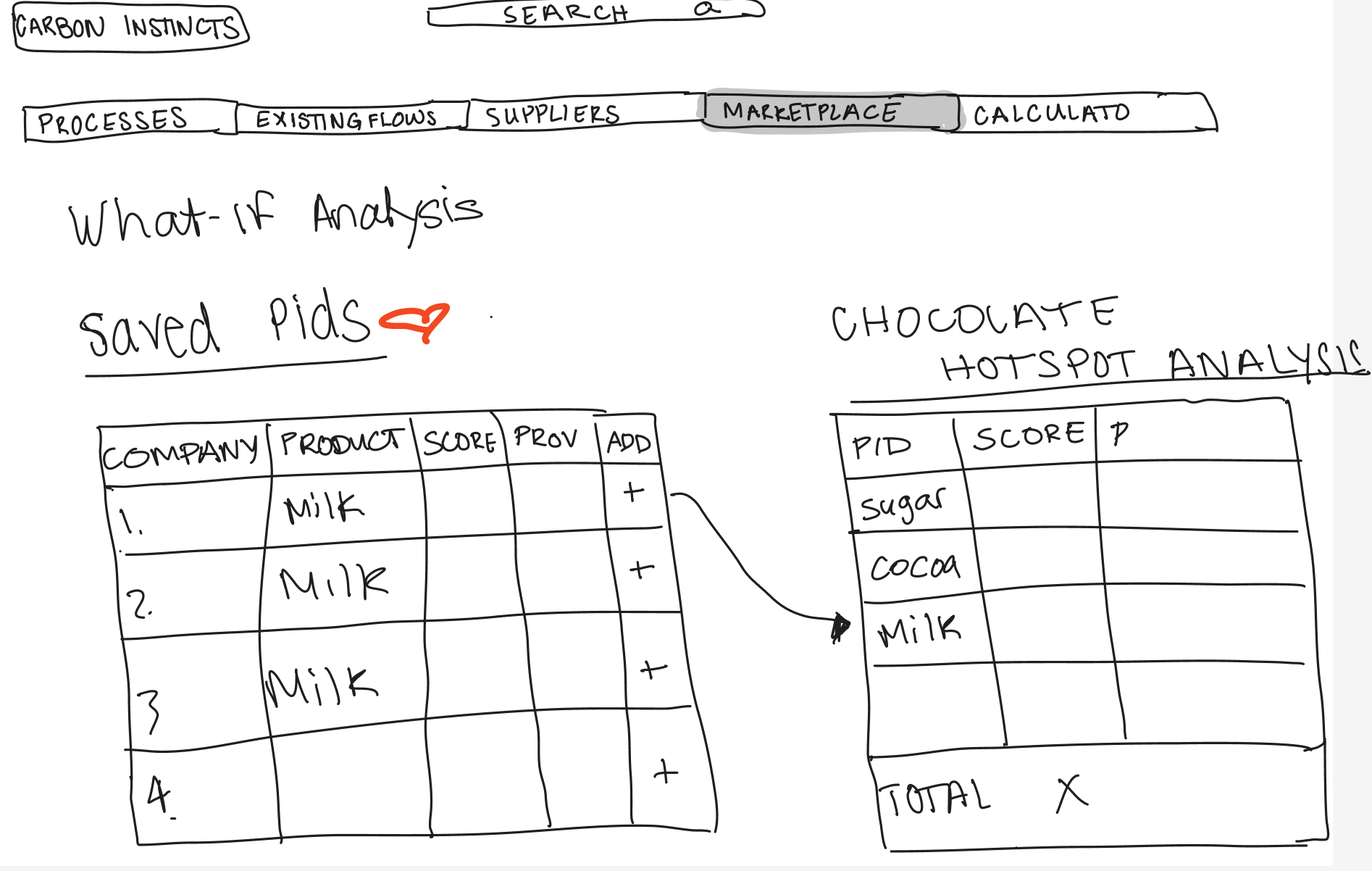

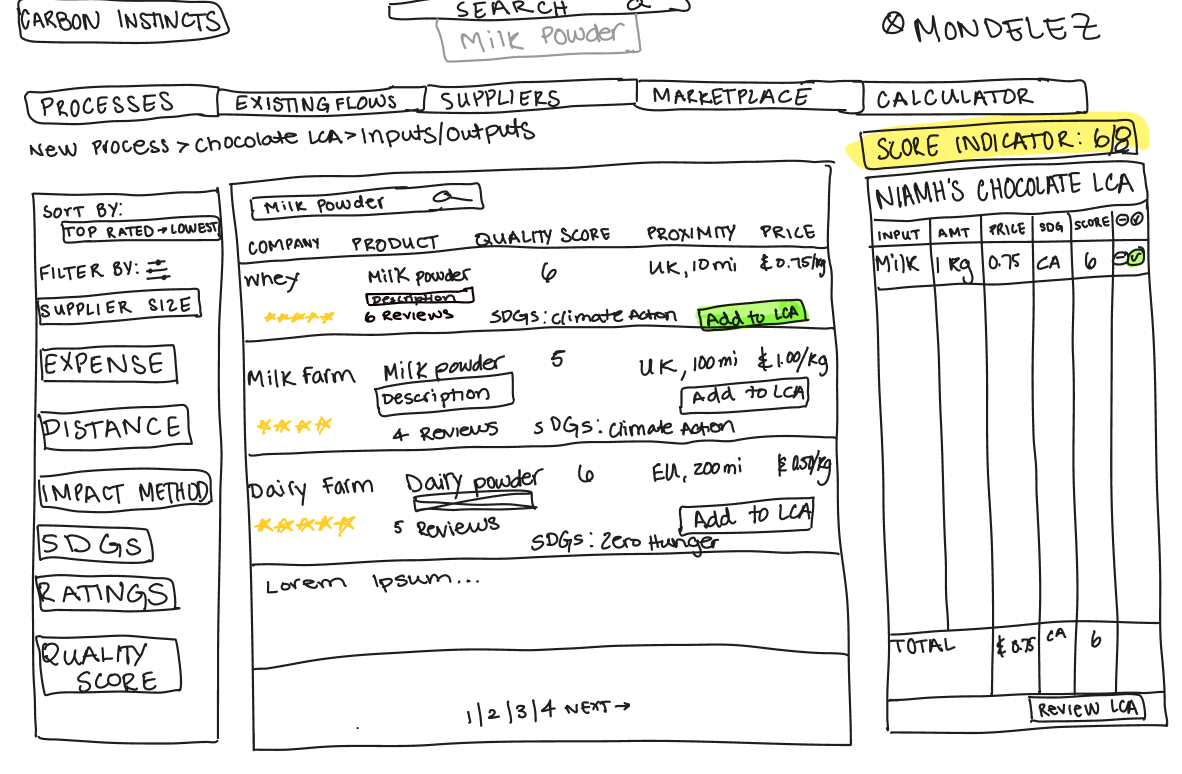
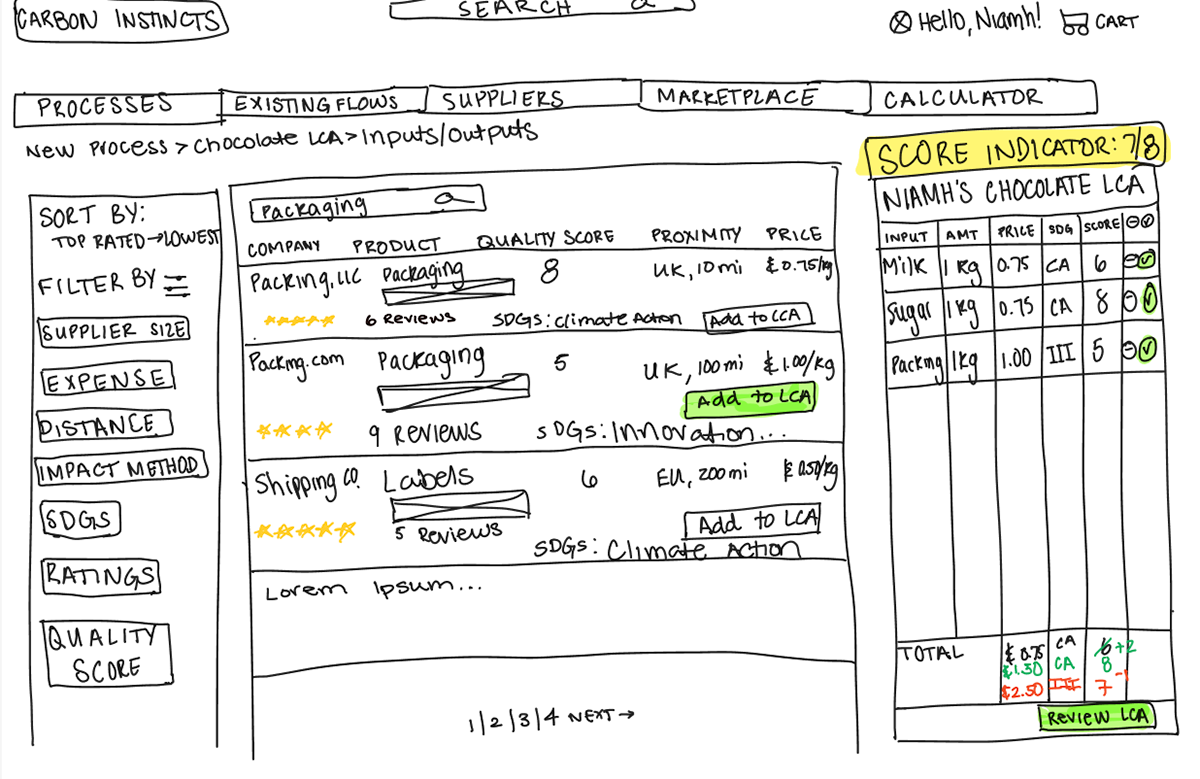
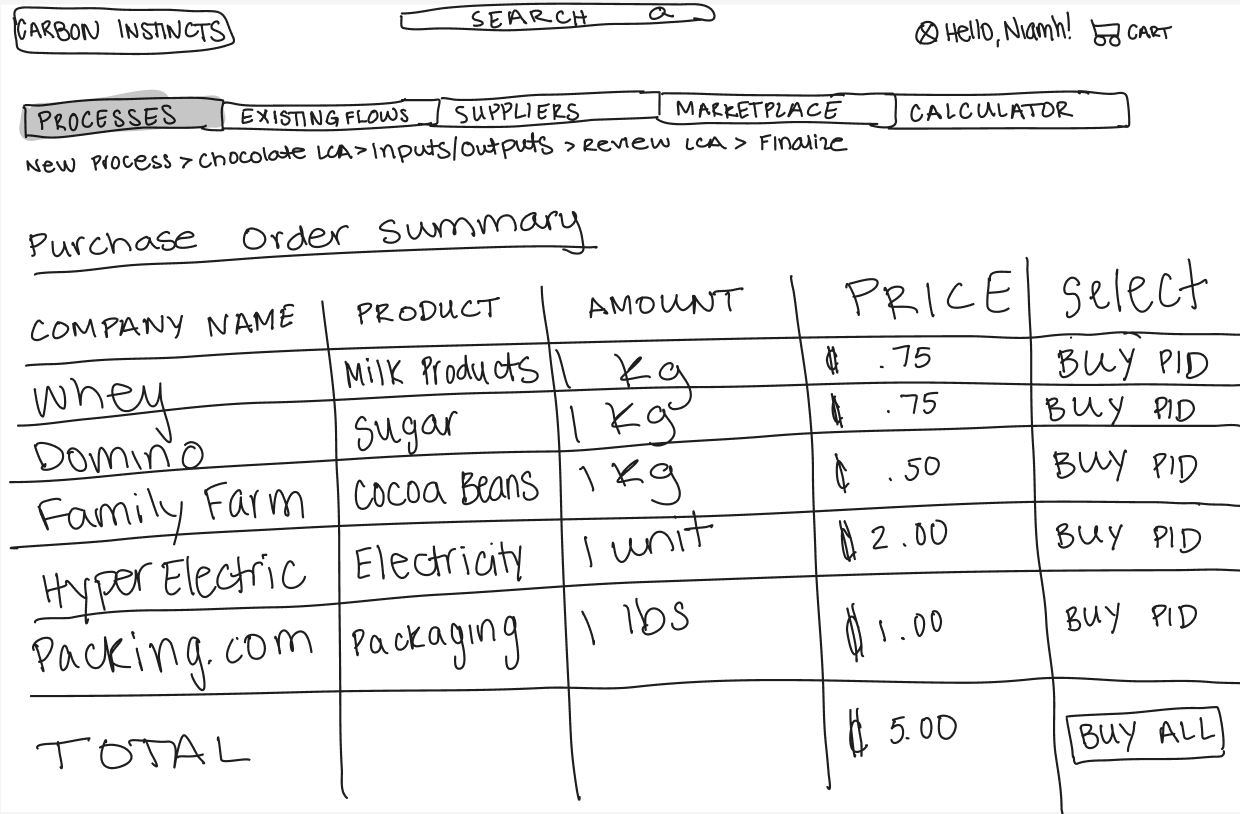
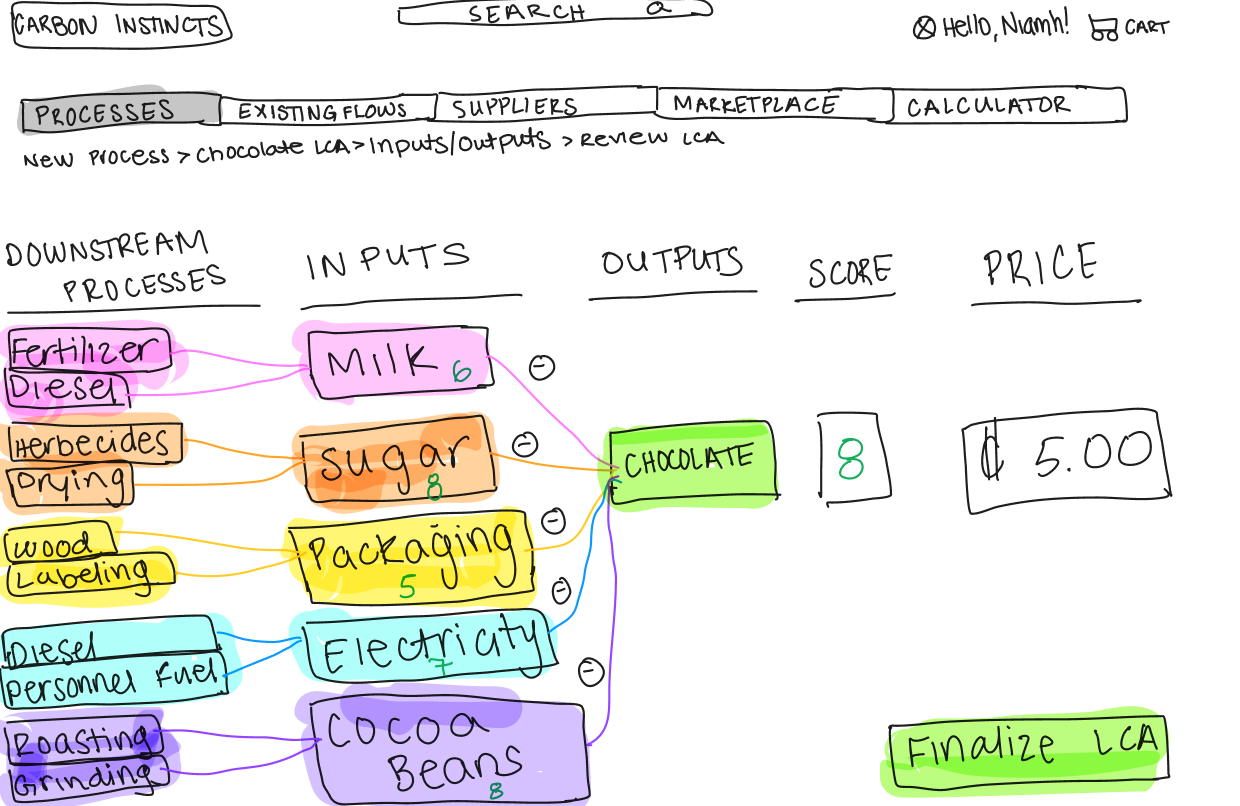
High-Fidelity Wireframes
1. Global Navigation: After design workshops with the team, the team concluded that there needed to be a separate marketplace for users to buy and sell Product Impact Data from other vendors. The "Marketplace" domain name was then changed to "Hotspot Resolution," and future versions of the platform will include a separate Marketplace.
2. The Dashboard: Feedback from the team indicated there needed to be an easier way to access each report within the dashboard. This led to creating a menu bar on the side that links to each report separately.
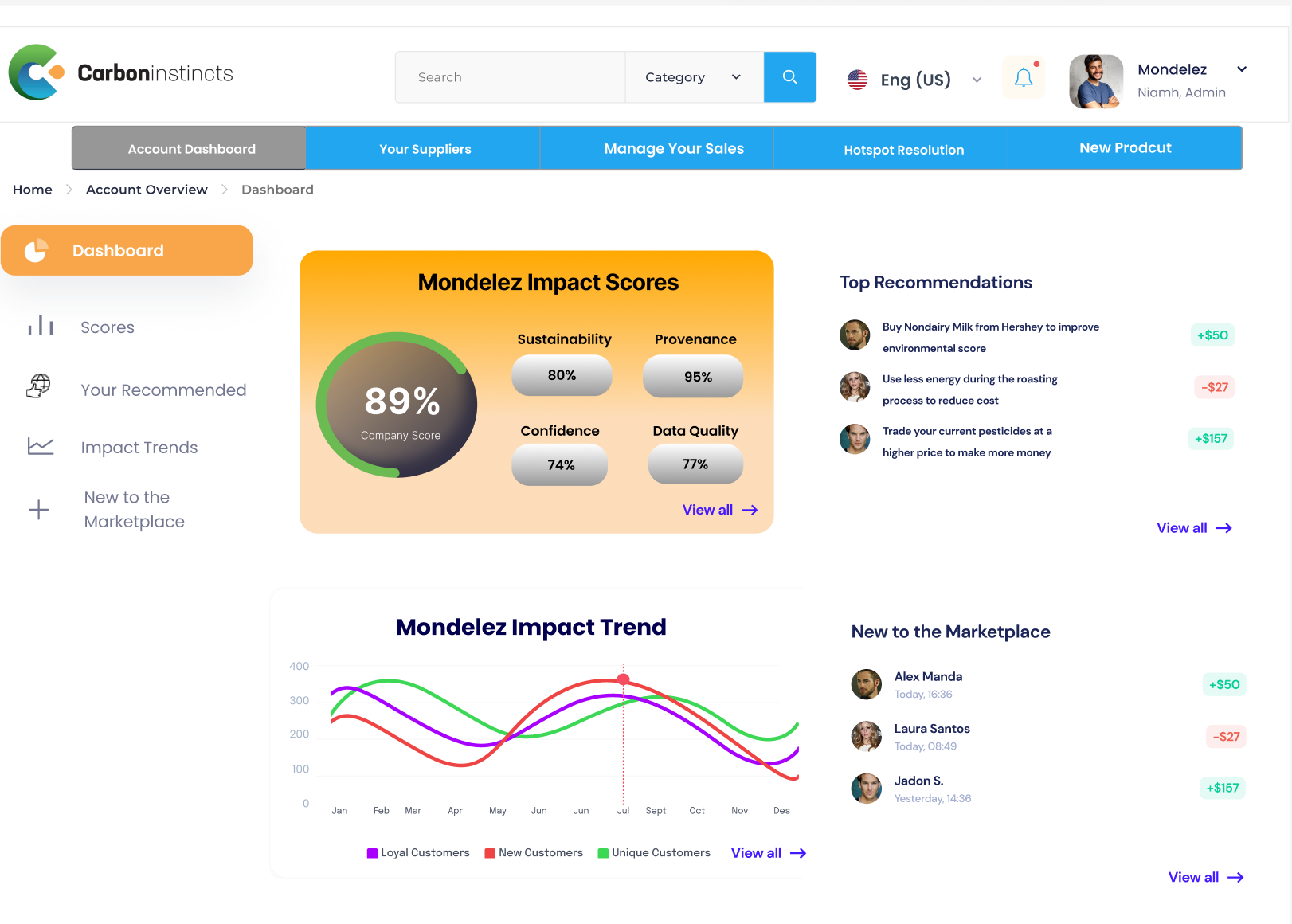
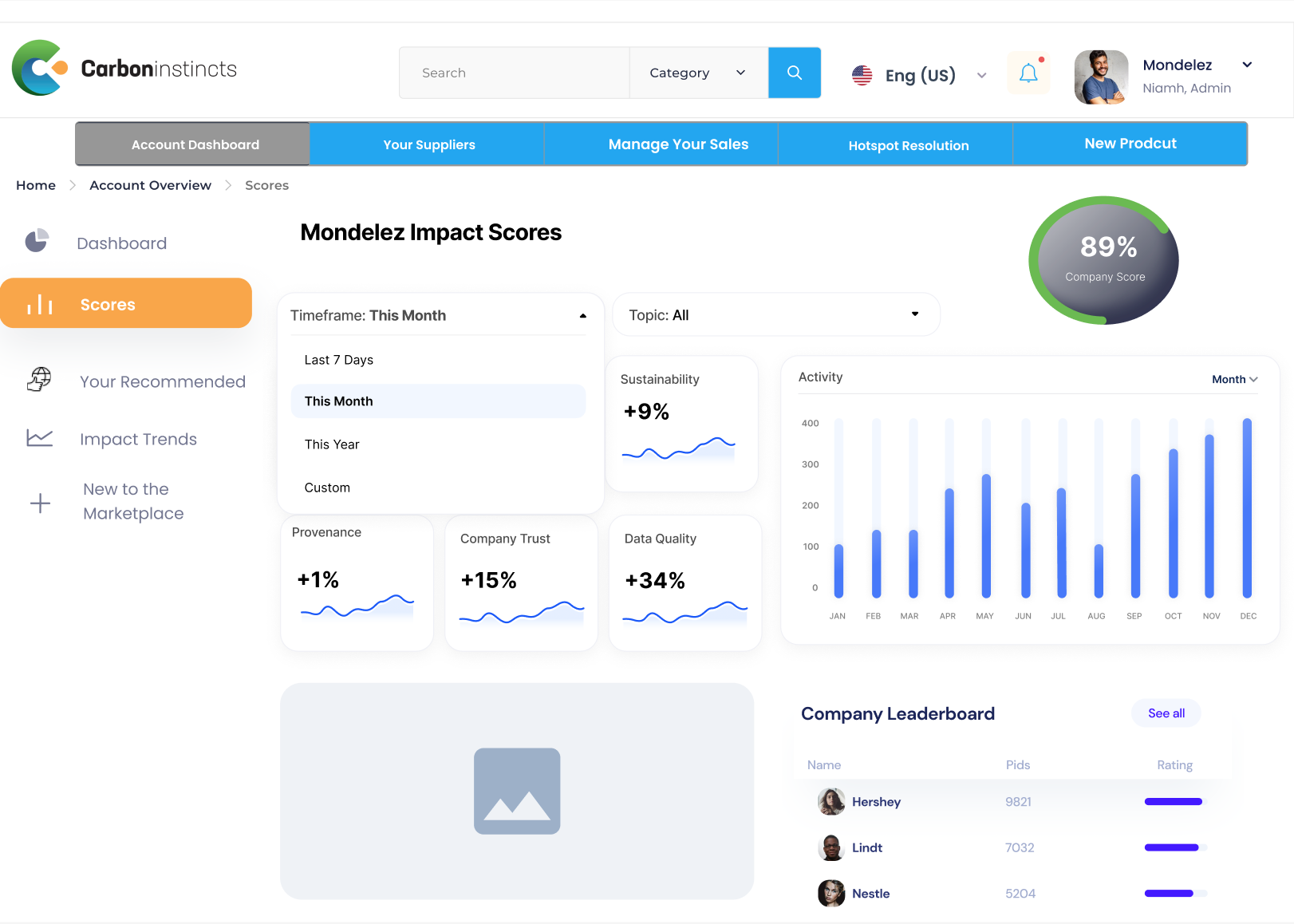

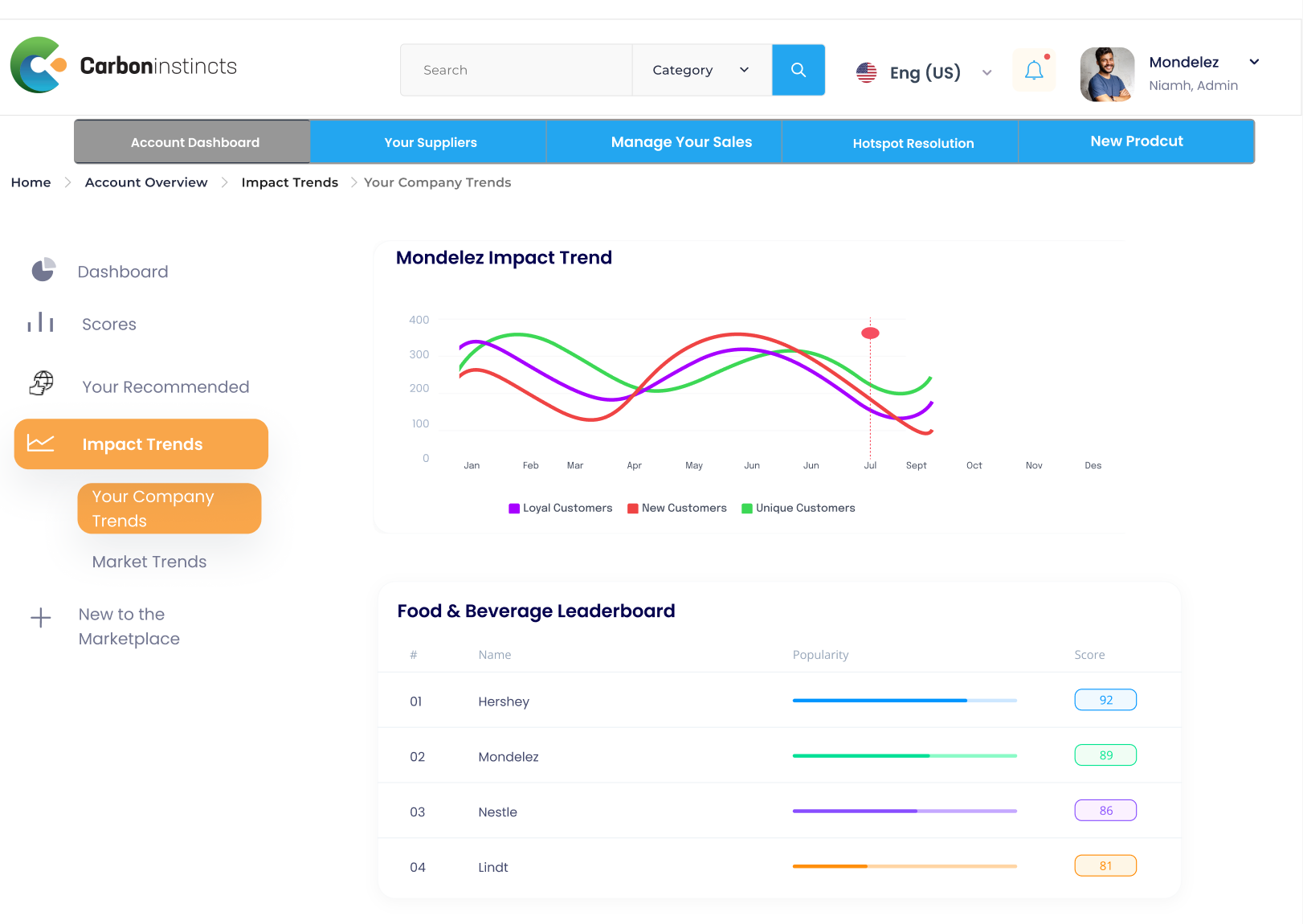
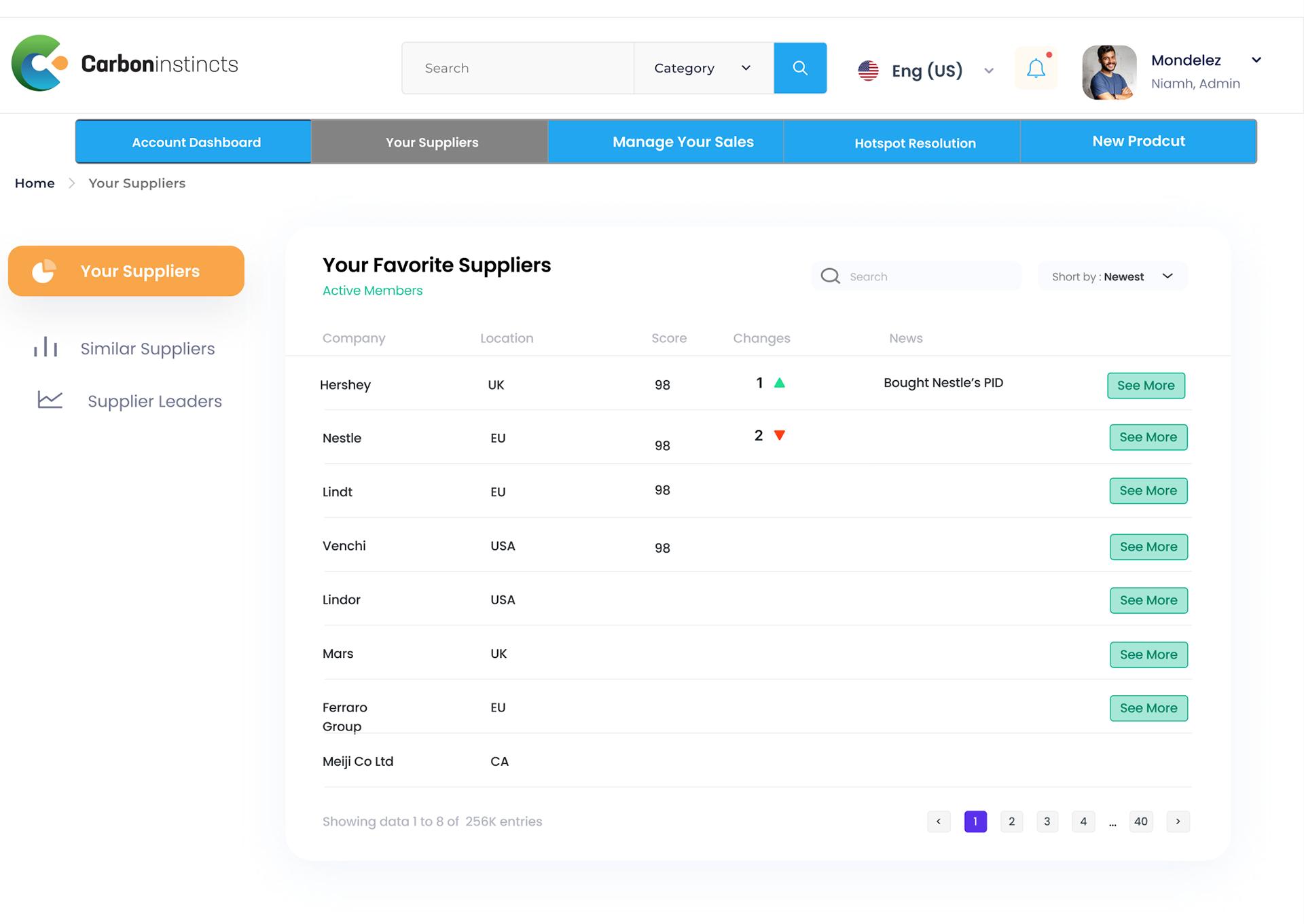

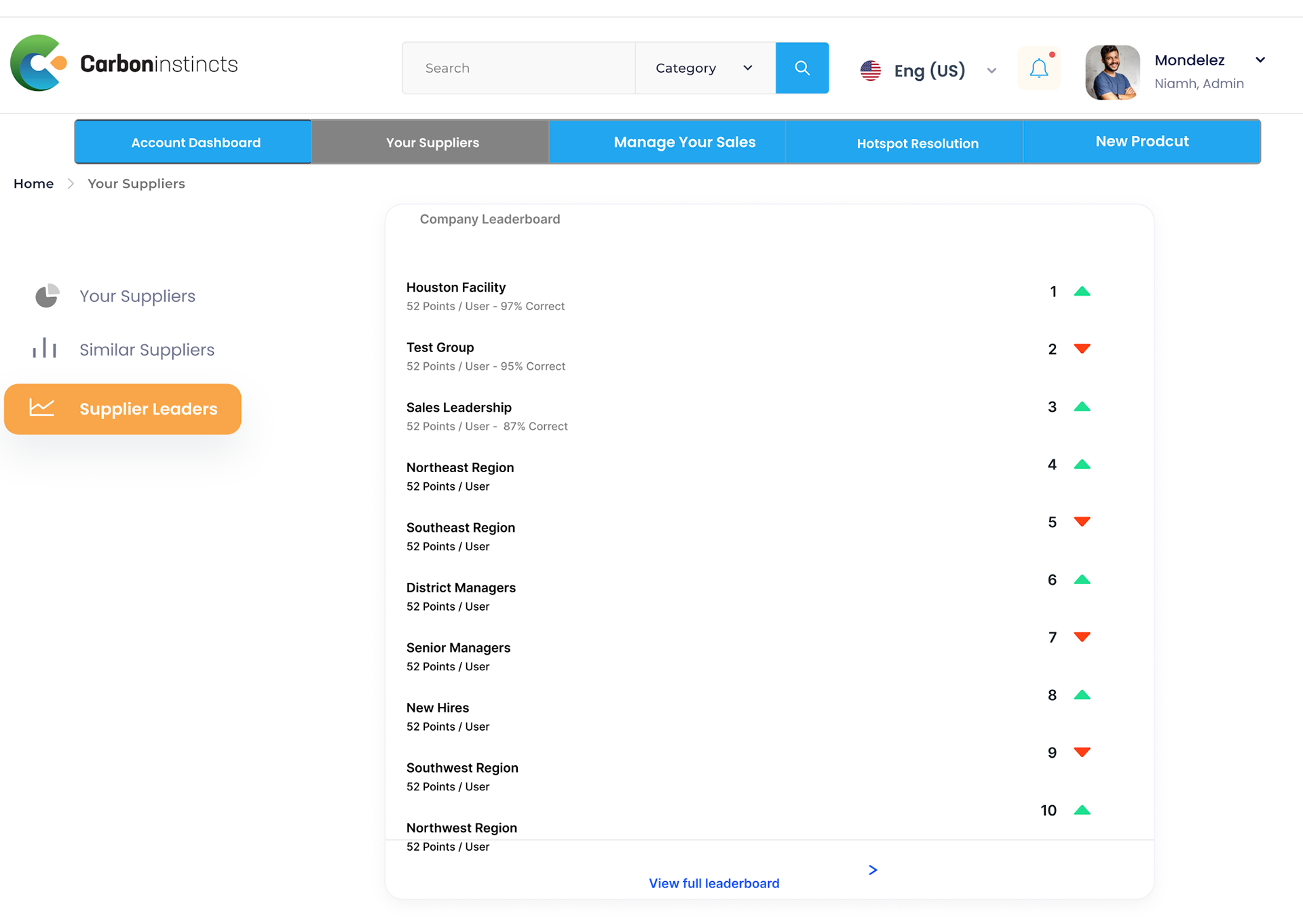
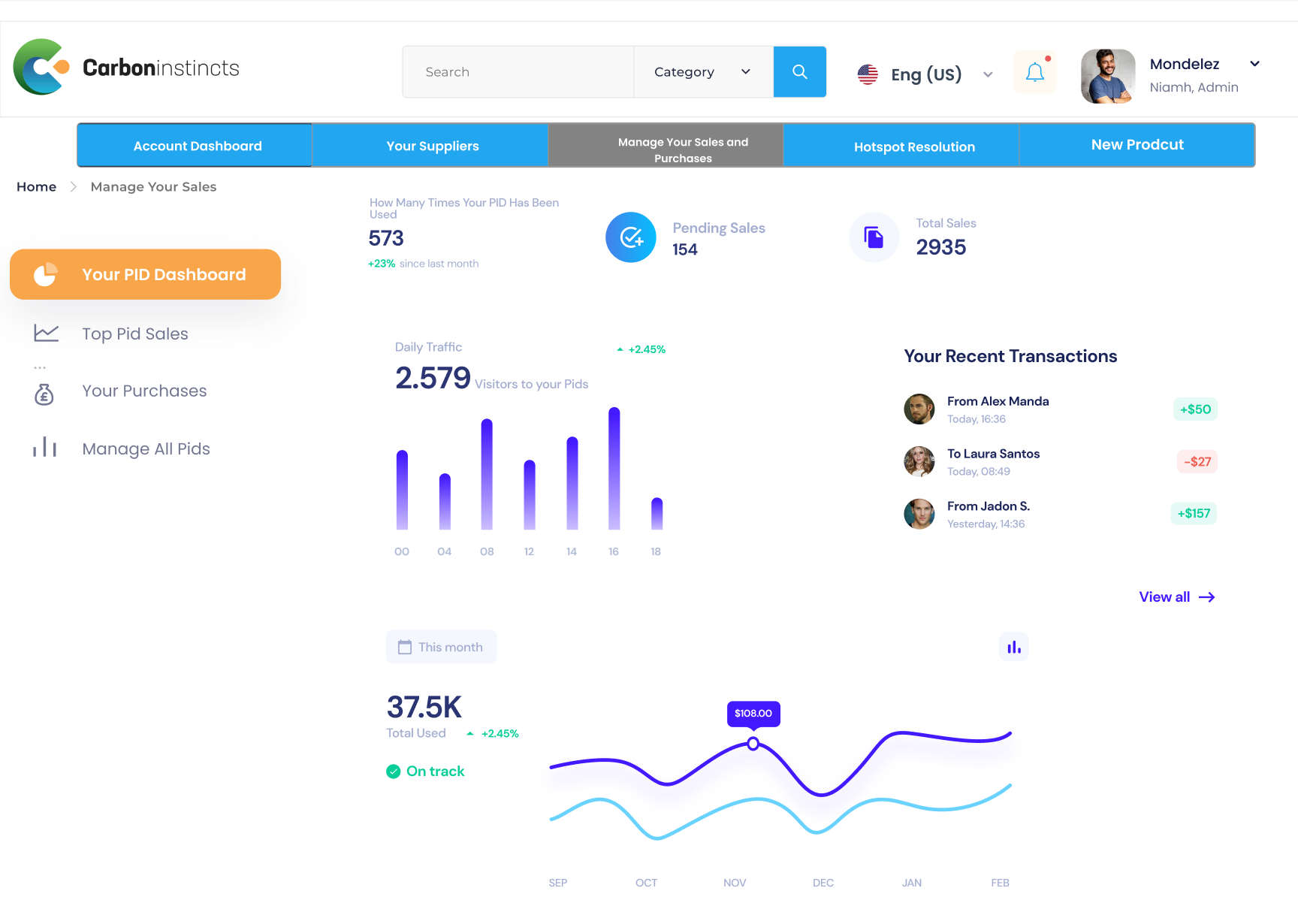
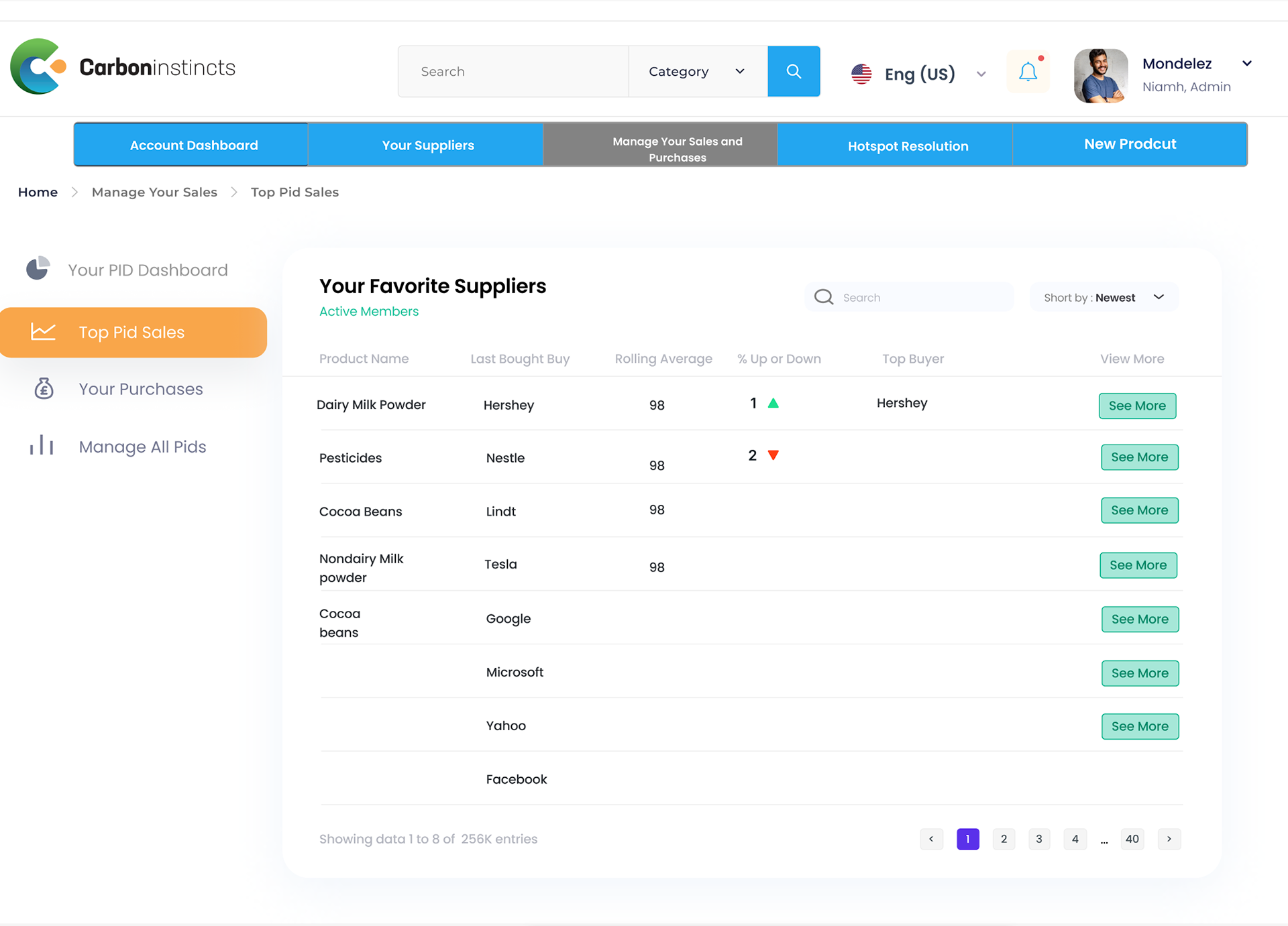


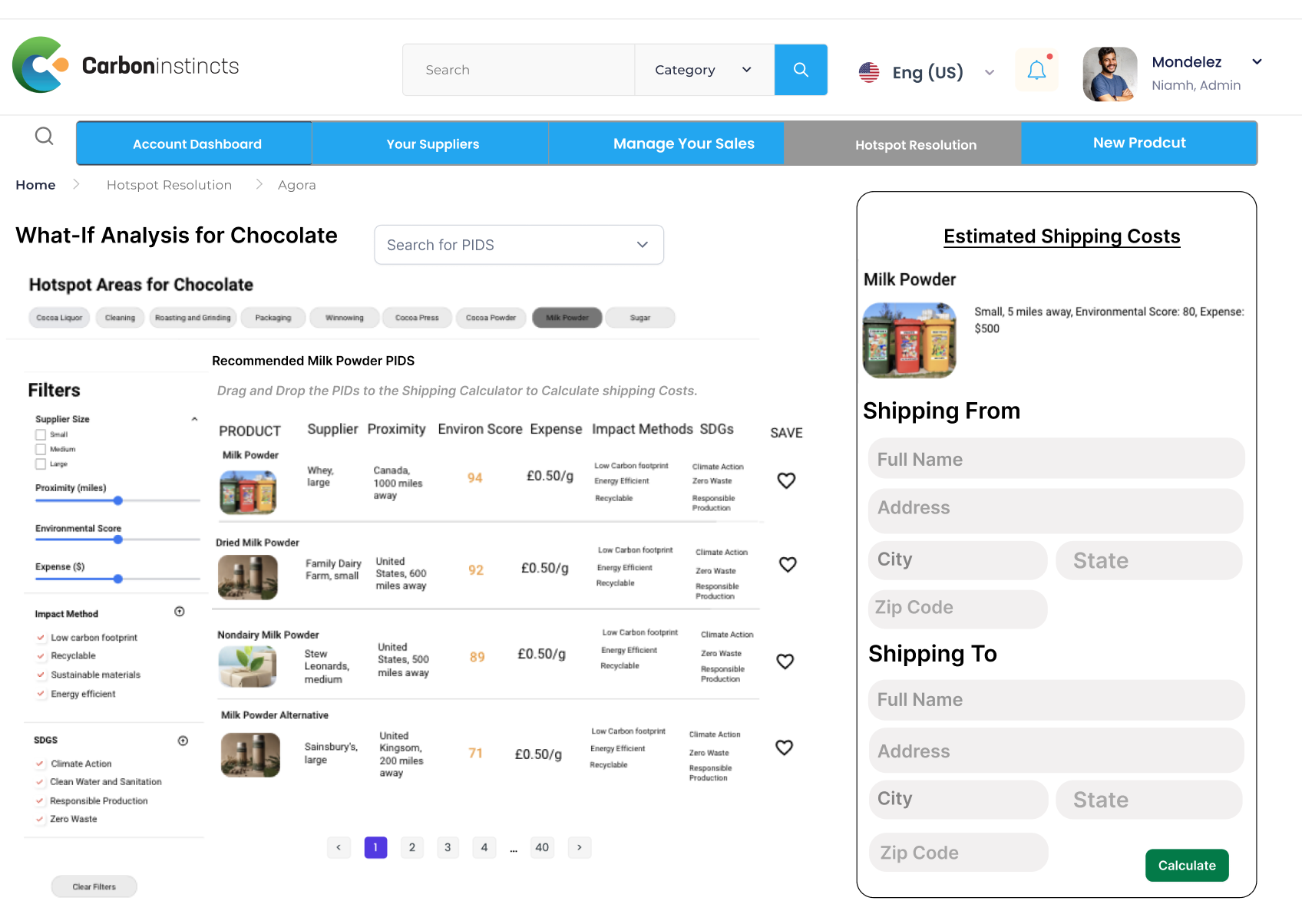
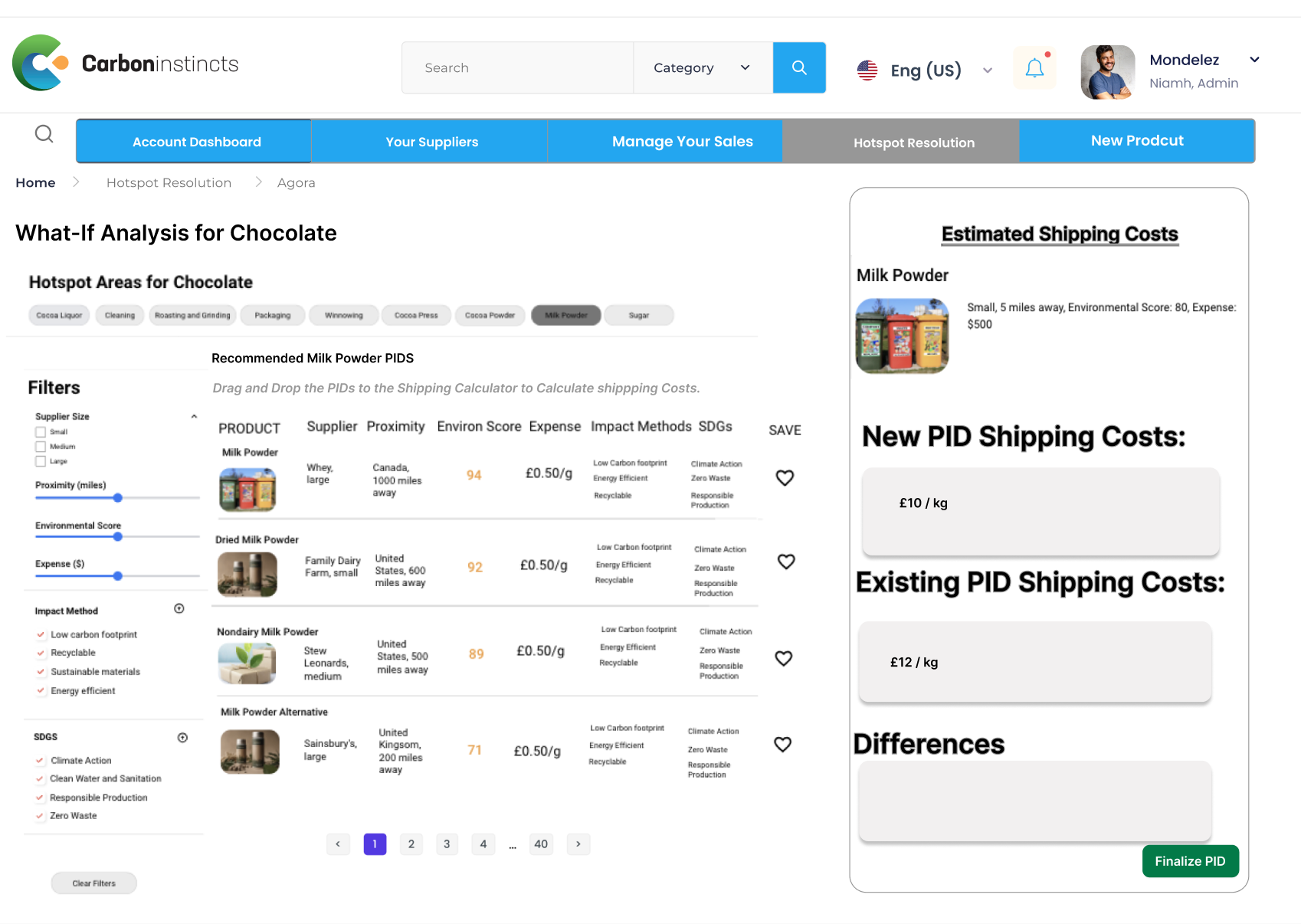
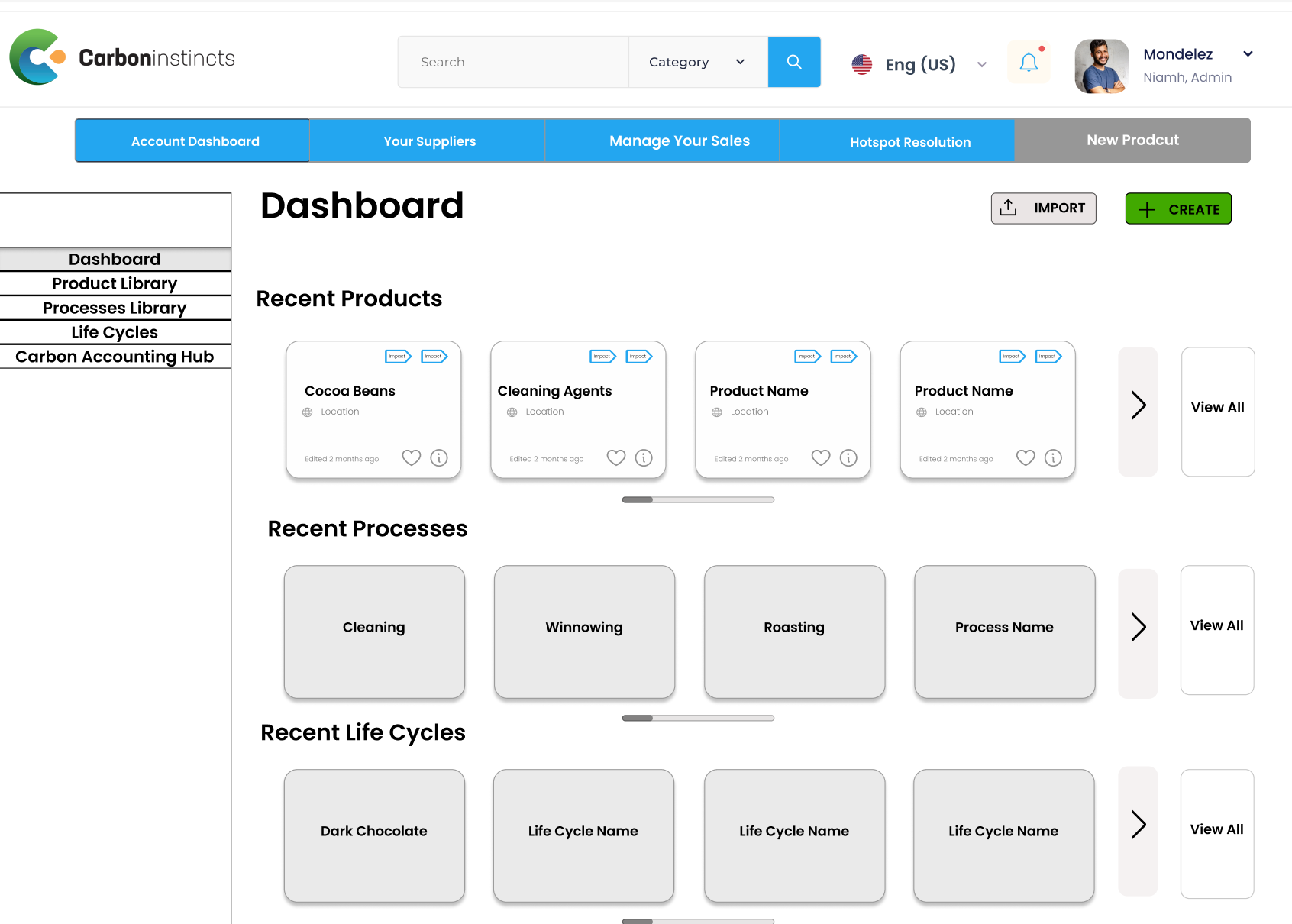

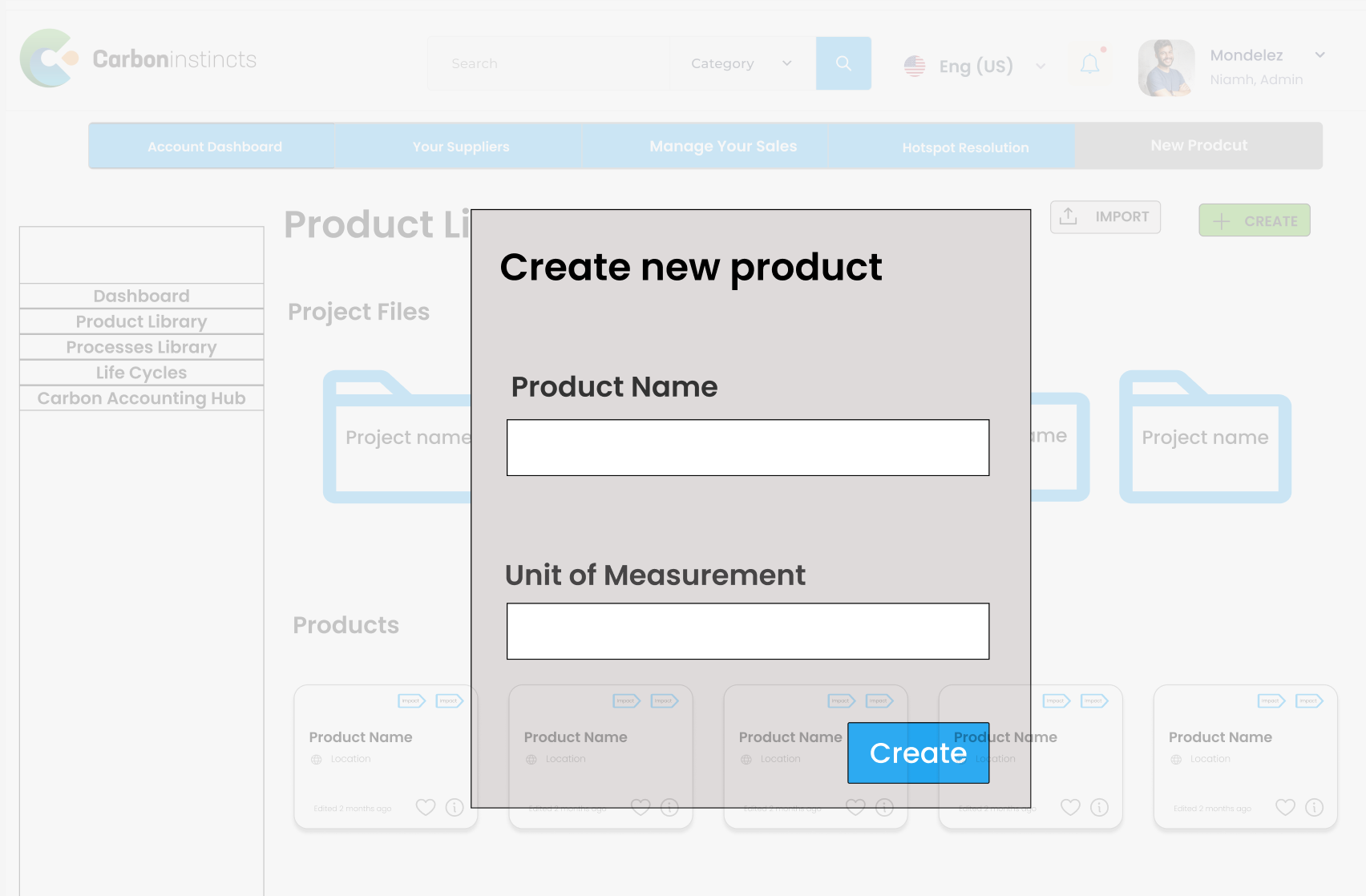
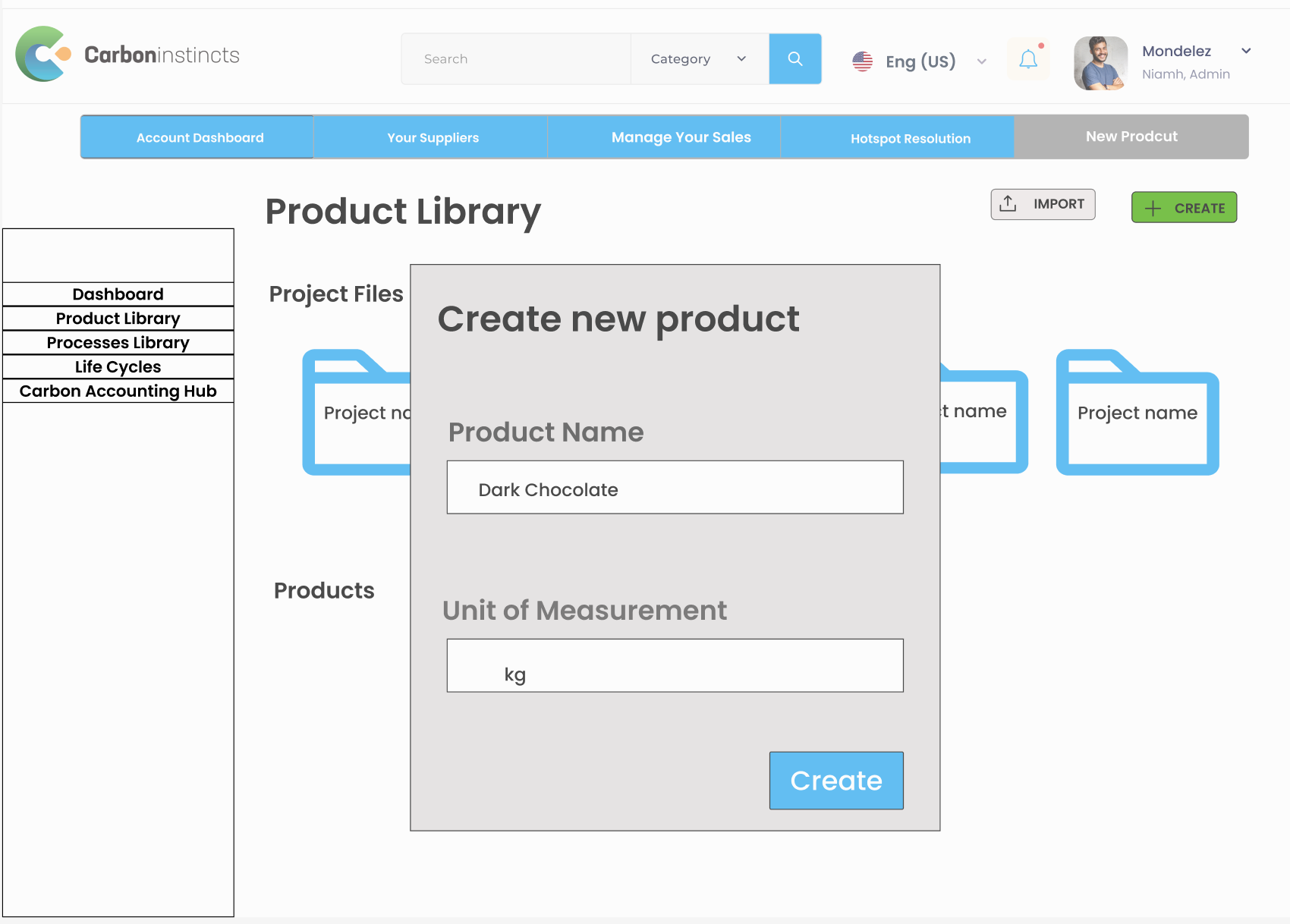
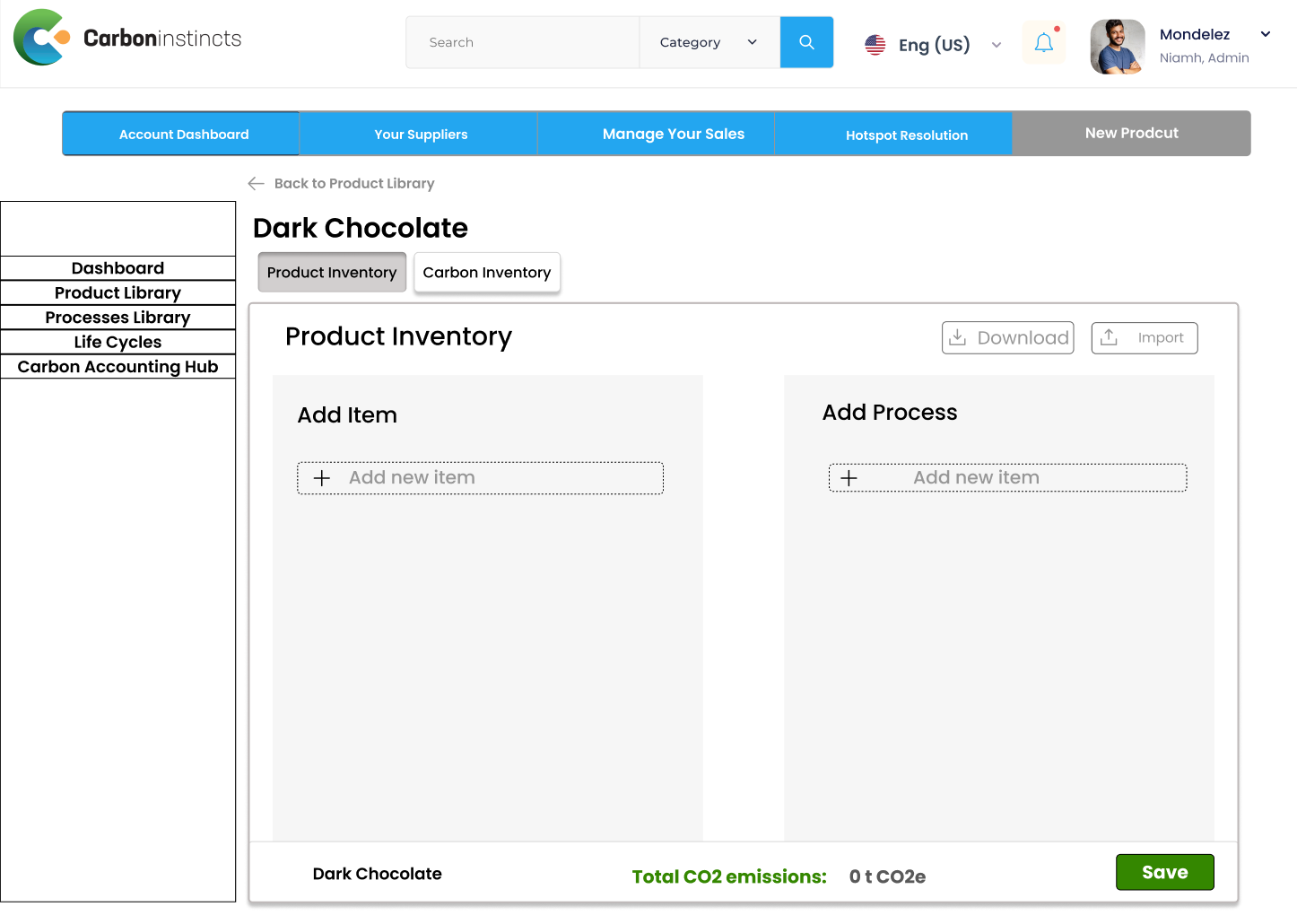


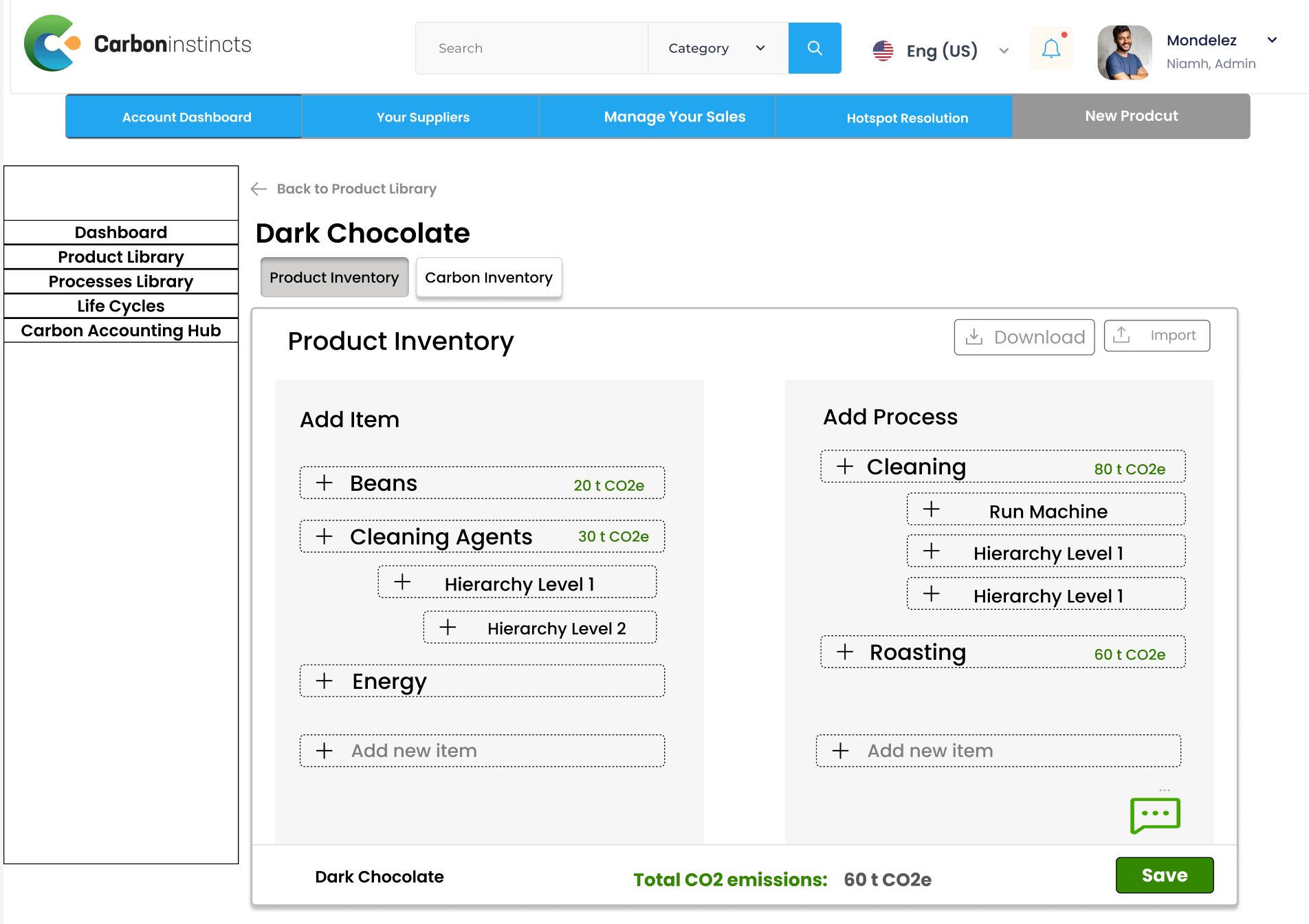
New Product Iterations
1. After user testing on the first version of high-fidelity wireframes, feedback suggested moving the global navigation to a sidebar to leave more room on the product pages.
2. Feedback also suggested users needed the ability to more easily dig into each specific product impact data. Each product card was consequently updated to include its own settings functionality.
3. Users also wanted the ability to see an overview of their production process, so an SOP was added next to the product label.
4. Since a brand logo was still being created simultaneously, I played around with different branding, but due to grant restrictions, user testing was paused.
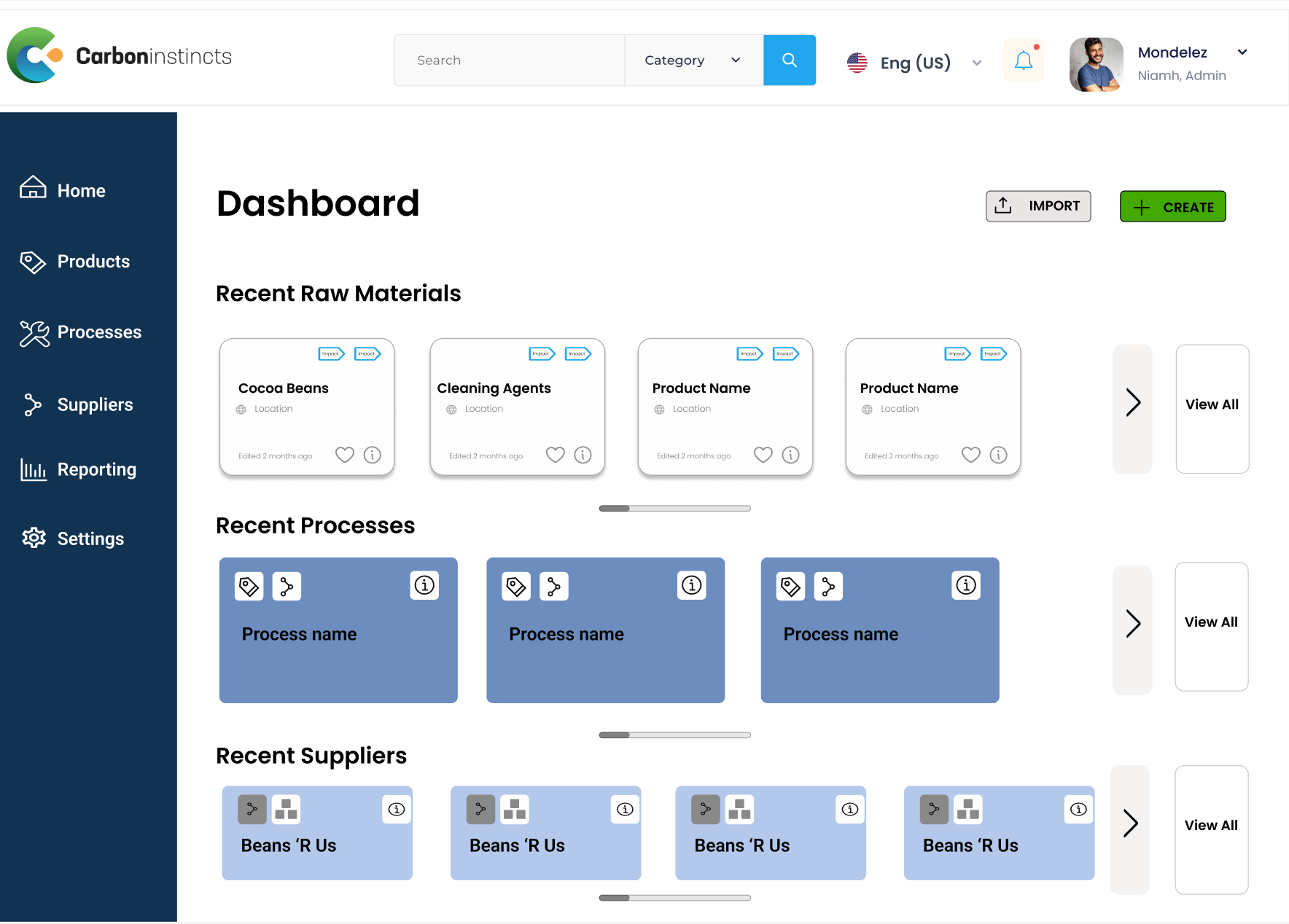
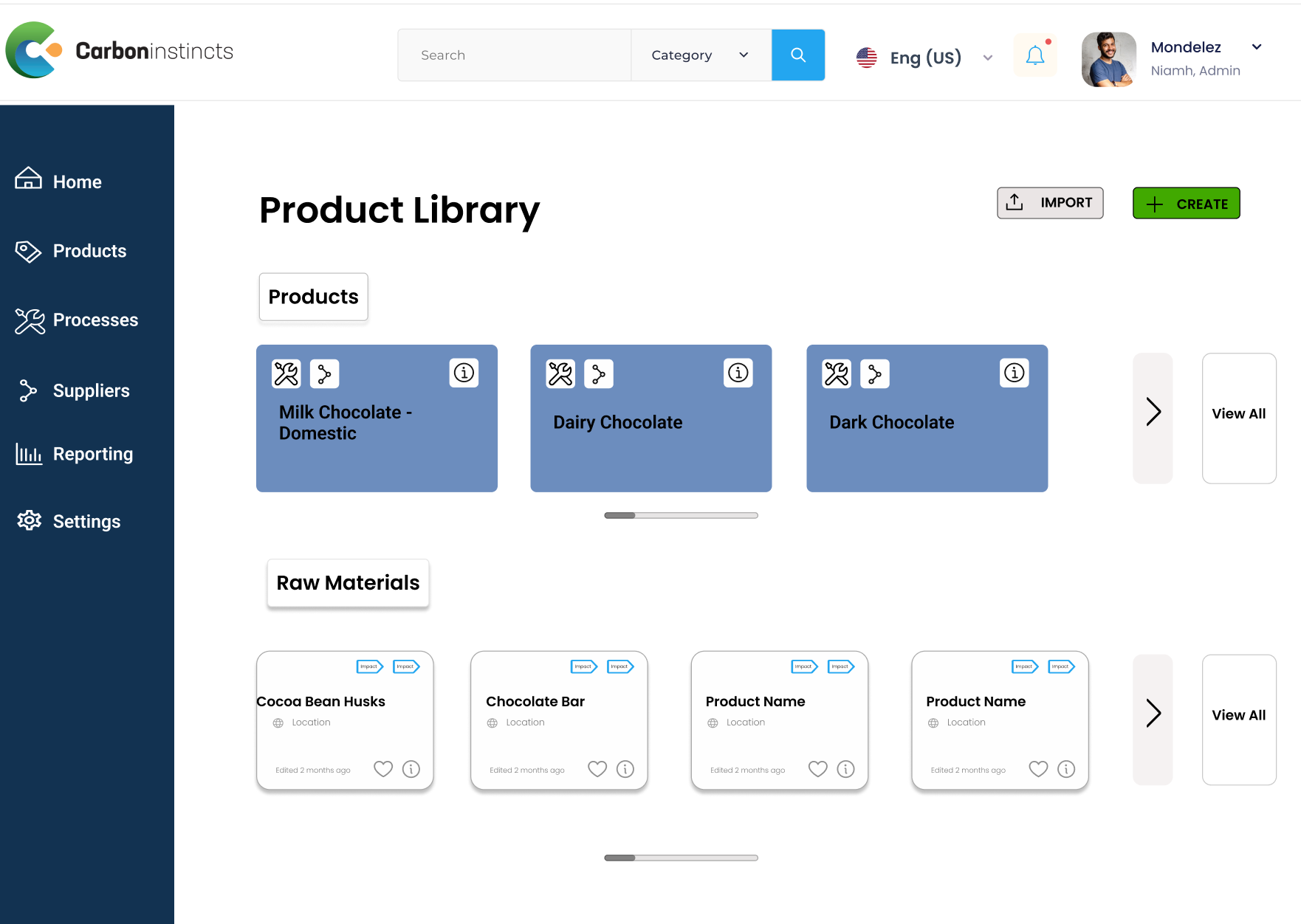

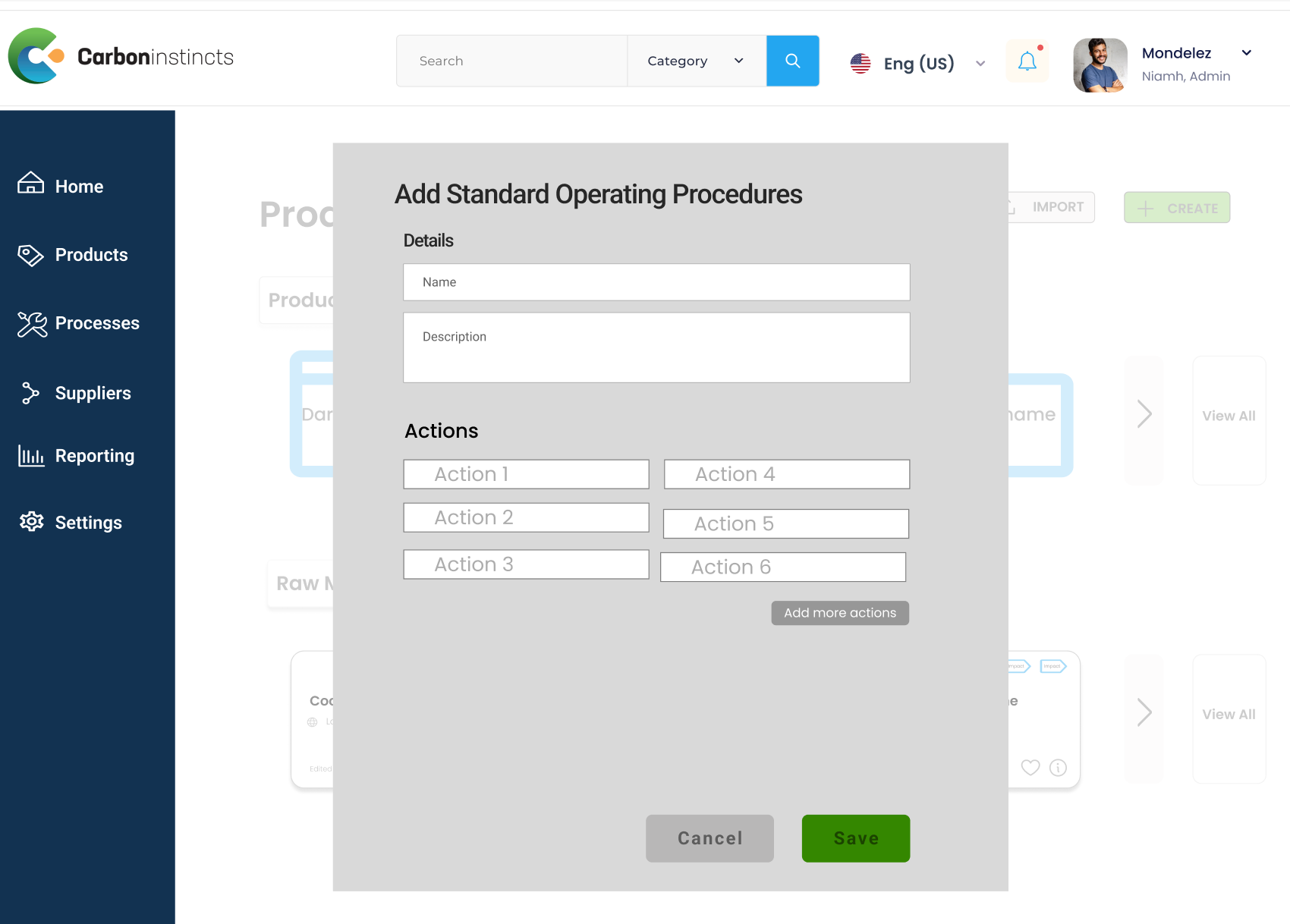
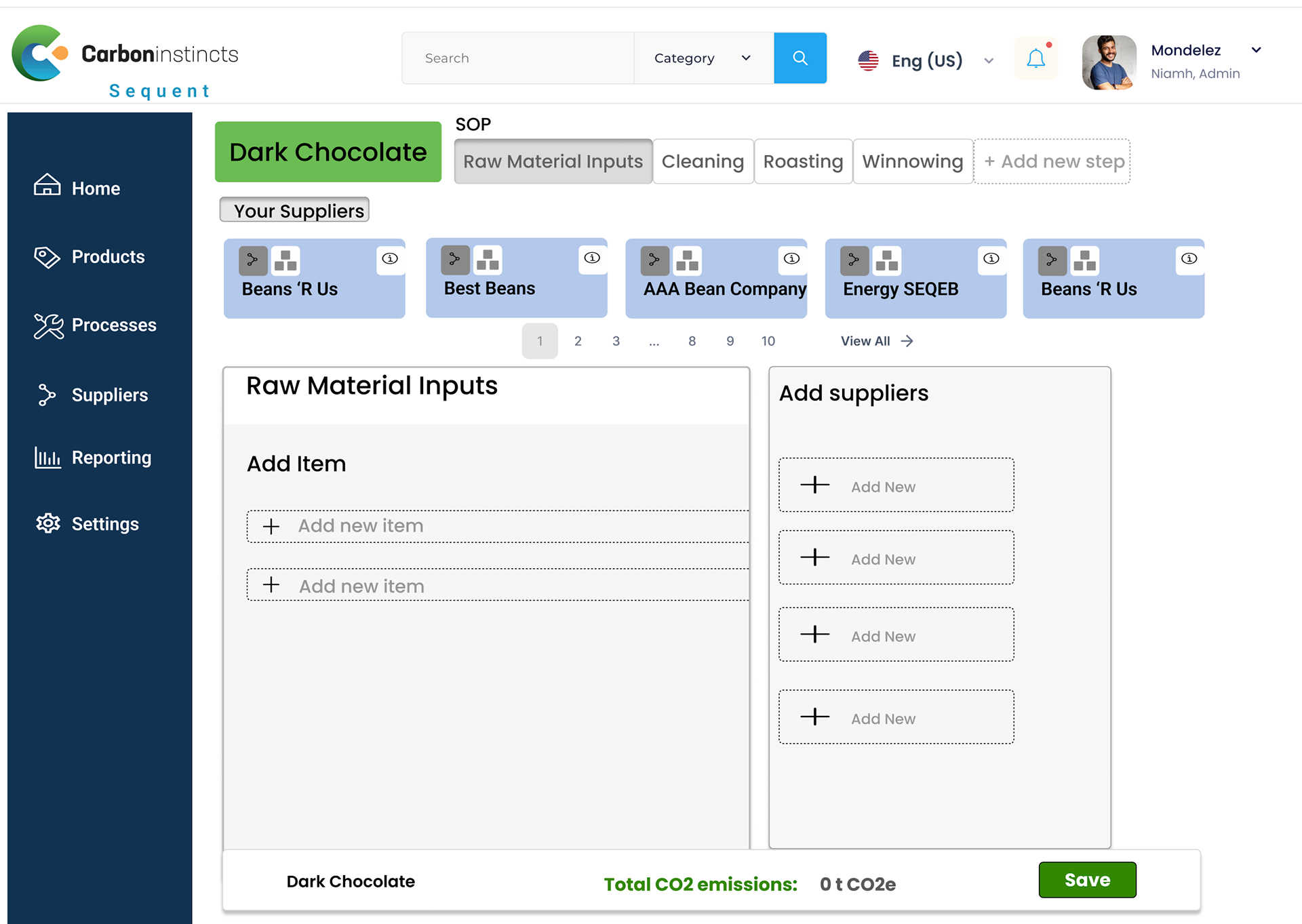
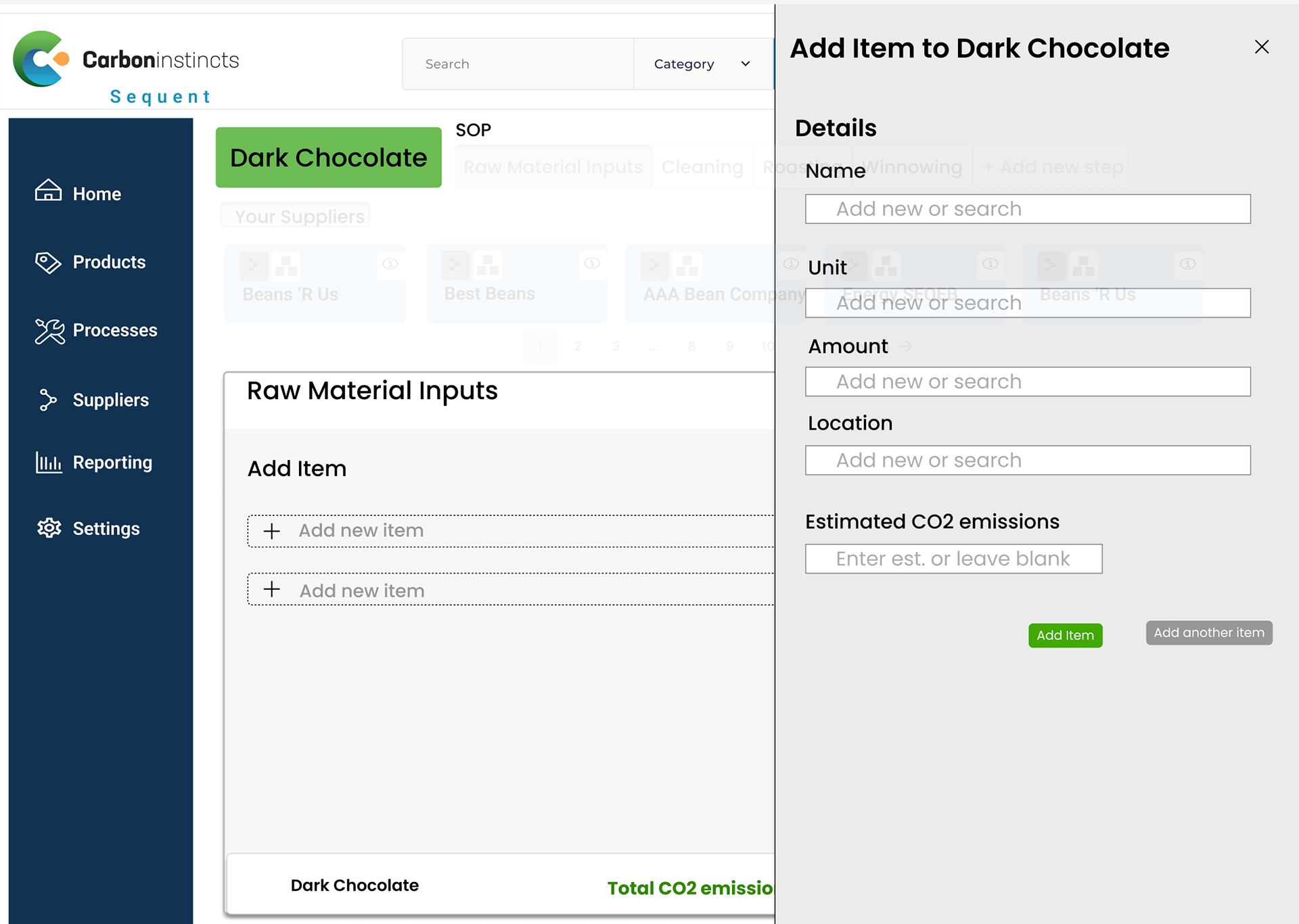
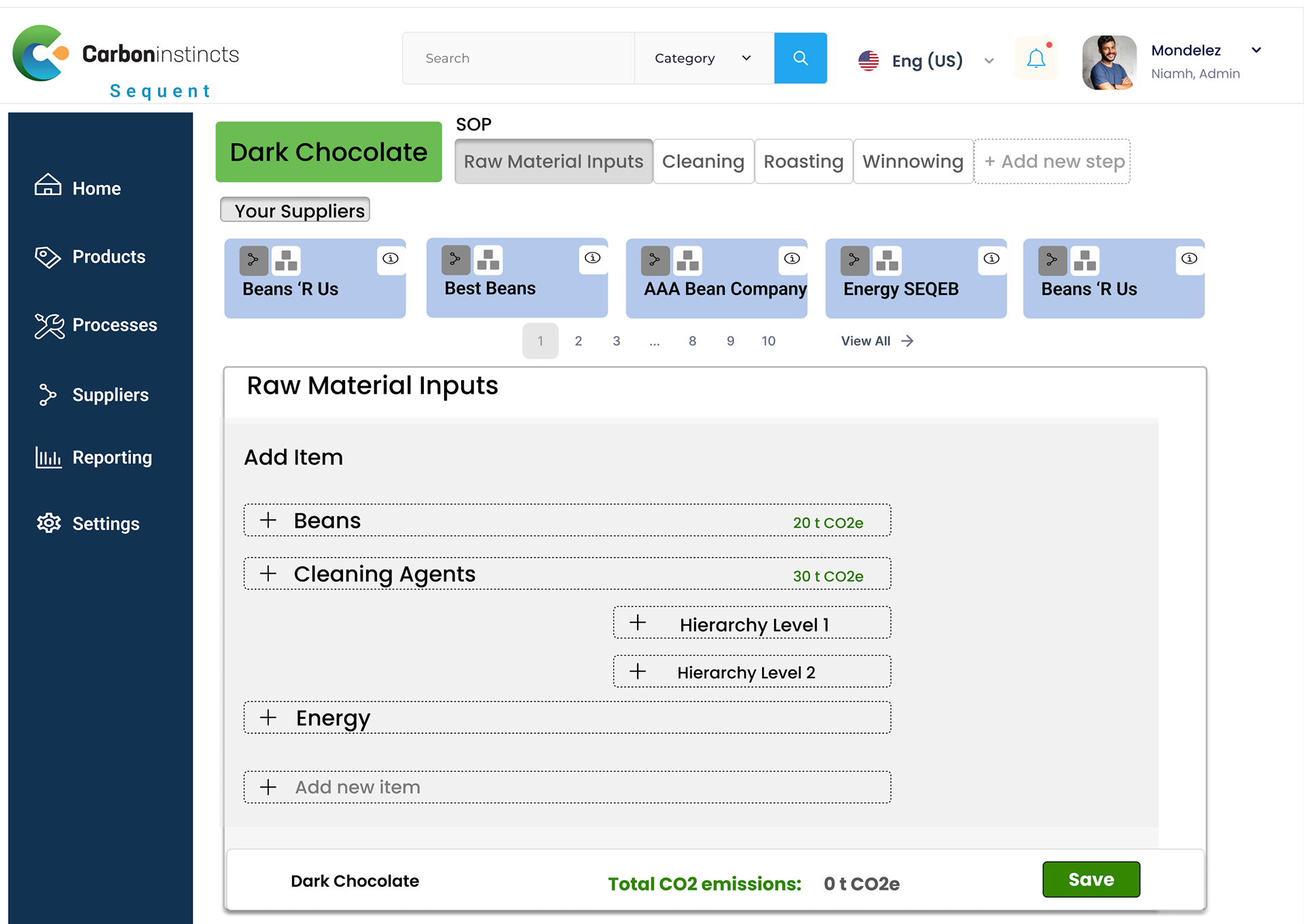
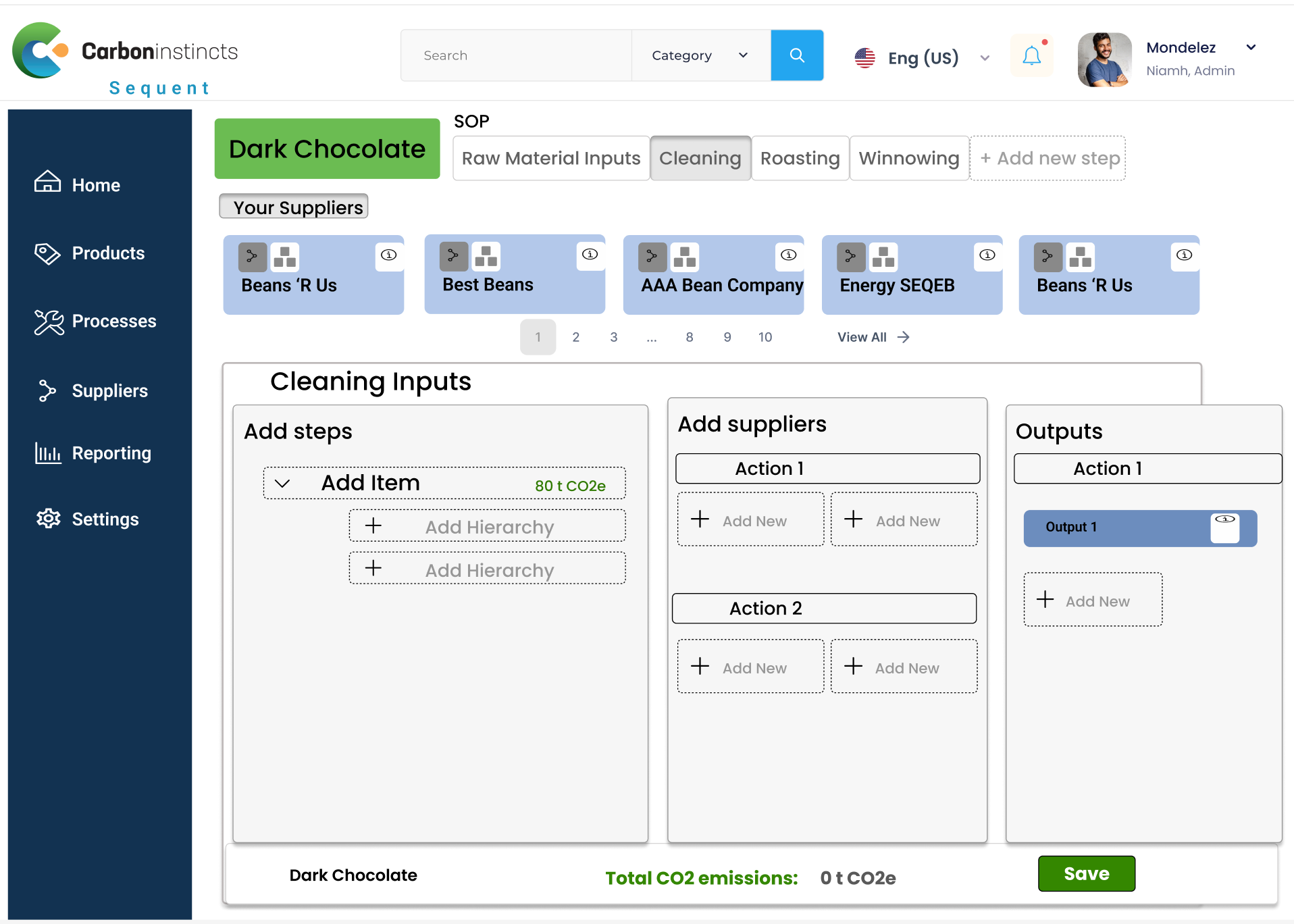

Evaluation
Carbon Instincts is currently in stealth, with the potential to disrupt the green tech space by addressing long-standing inefficiencies. A prototype was created, but unfortunately, due to UK grants, I was unable to continue working on the project while living in the US. If the project continued, more user testing would have been the next step, which would have included:
Defining success criteria with stakeholders.
Developing realistic scenarios and tasks for usability testing.
Recruiting participants for comprehensive evaluation
Reflection
While designing a prototype for Carbon Instincts, a branding kit and logo were being created simultaneously. This resulted in various branding iterations throughout the prototypes. If I were to start from the beginning again, I would work with the co-founders to create a more succinct design system before prototyping began to ensure consistency.
Carbon Instincts remains a highlight of my work, demonstrating the value of combining user insights with strategic design to tackle complex global challenges with innovative and simple solutions.

